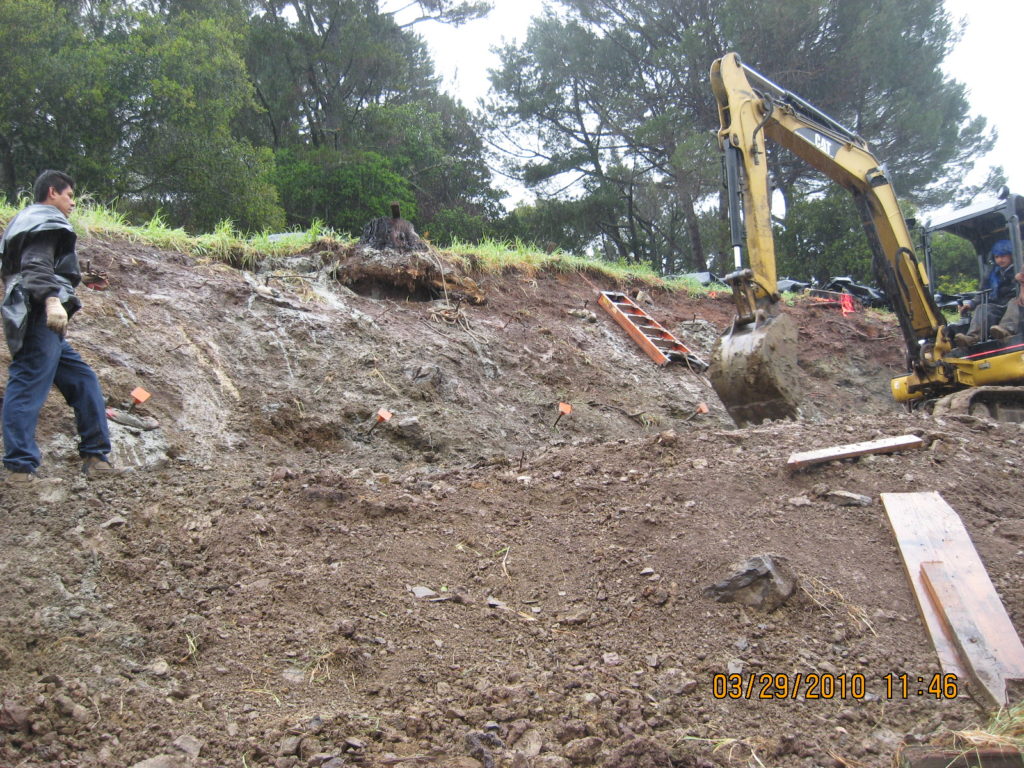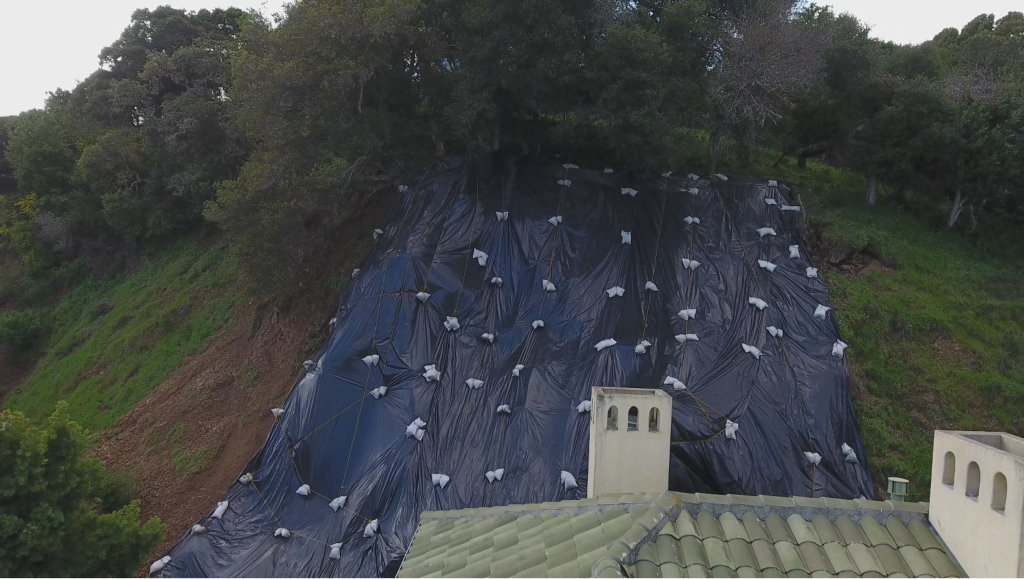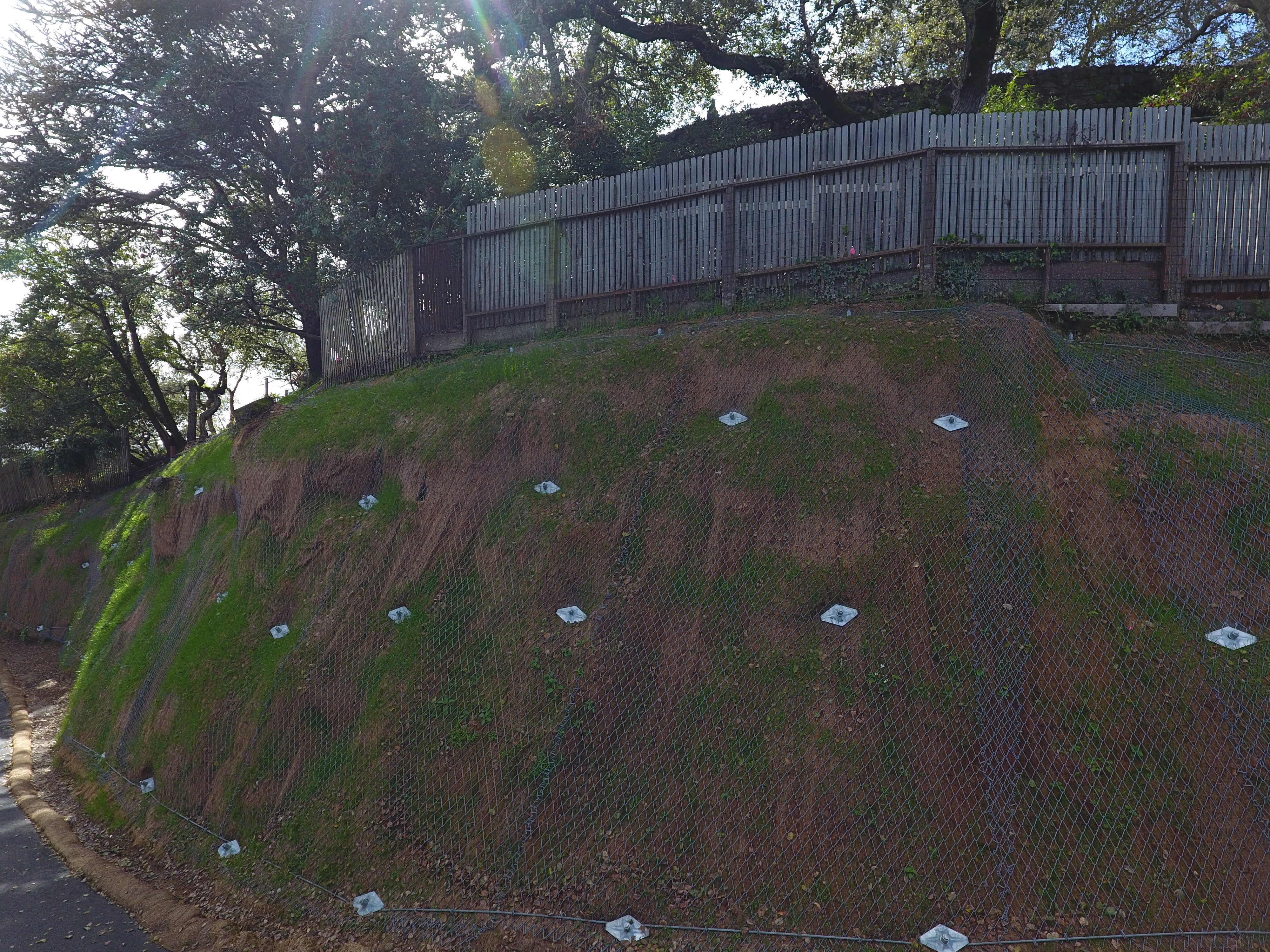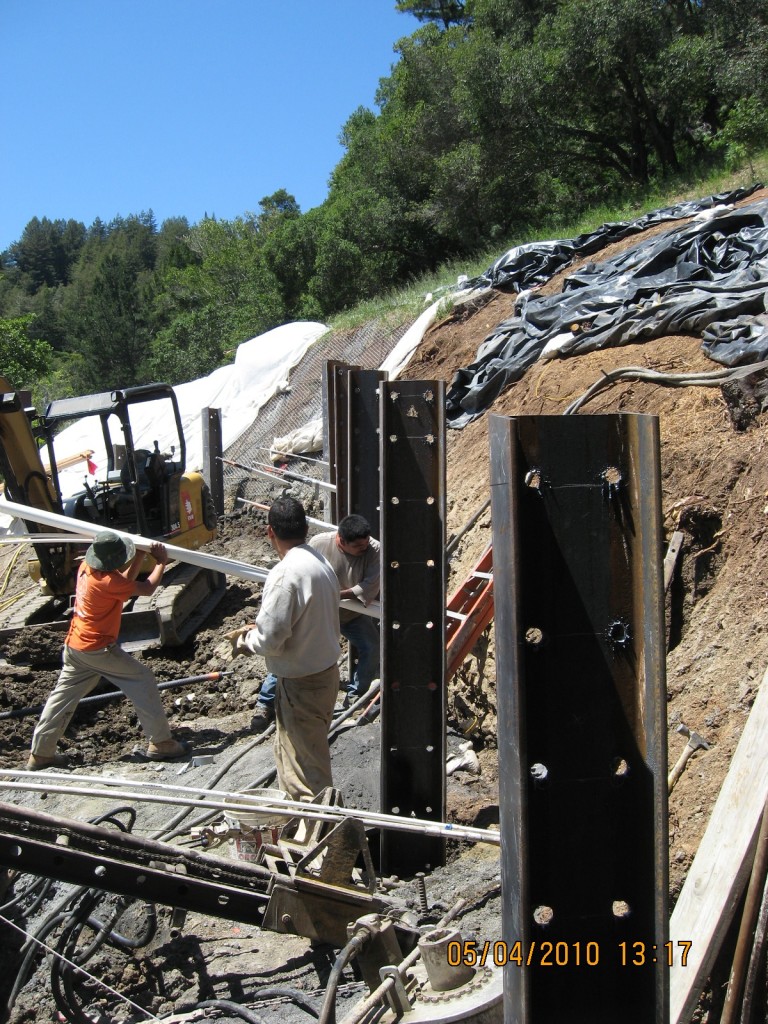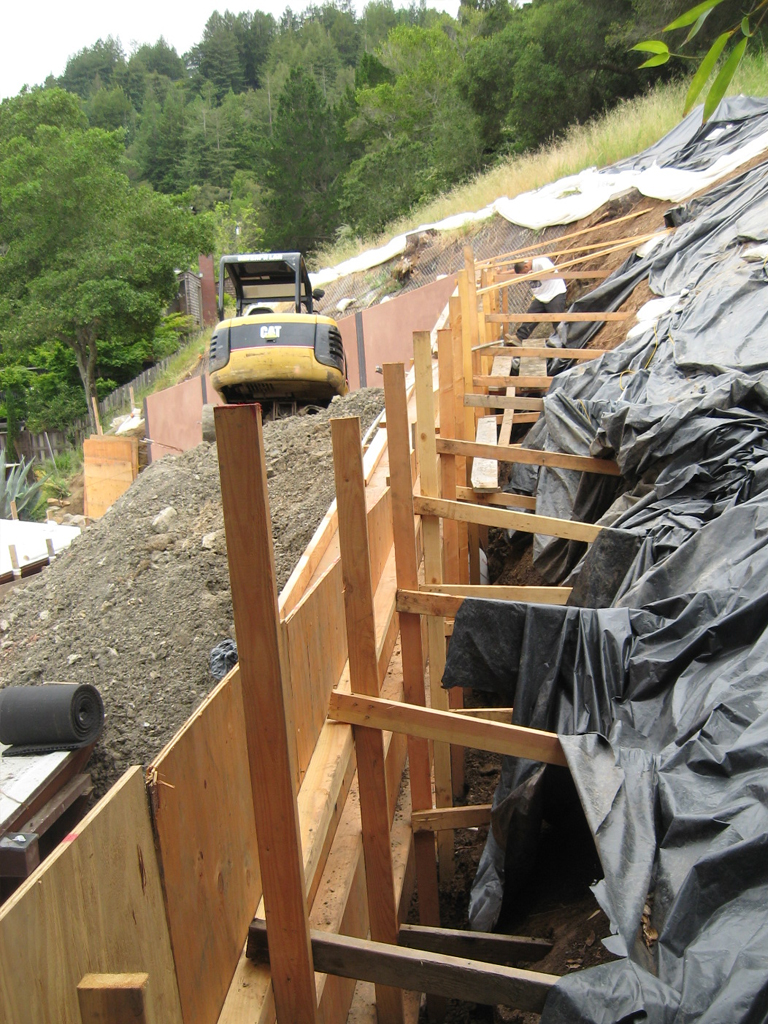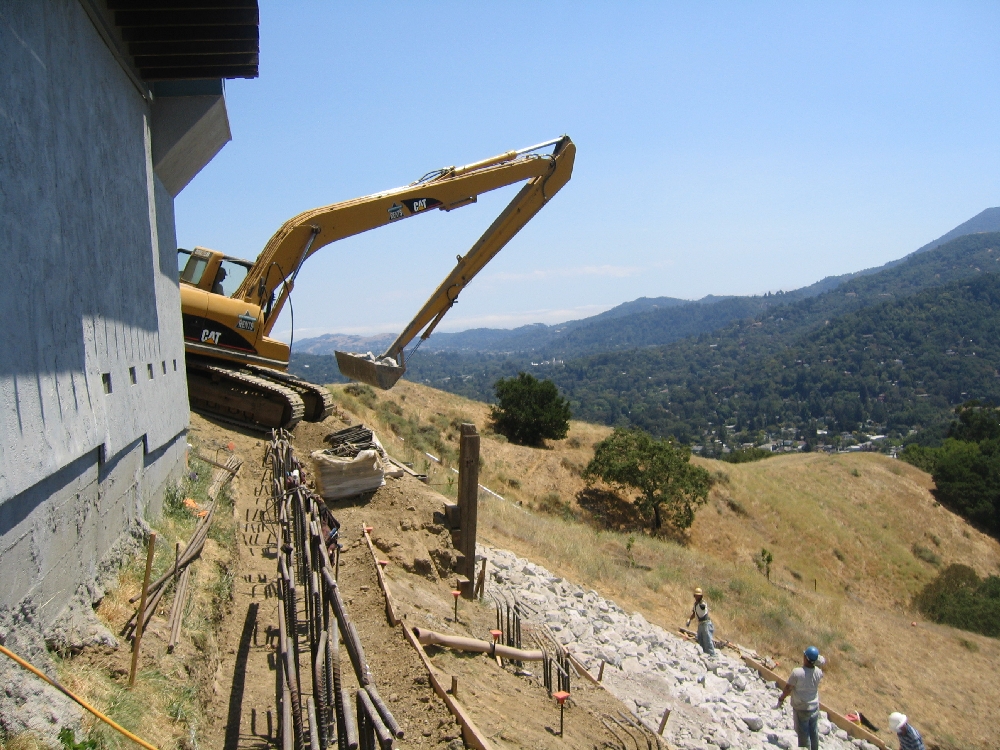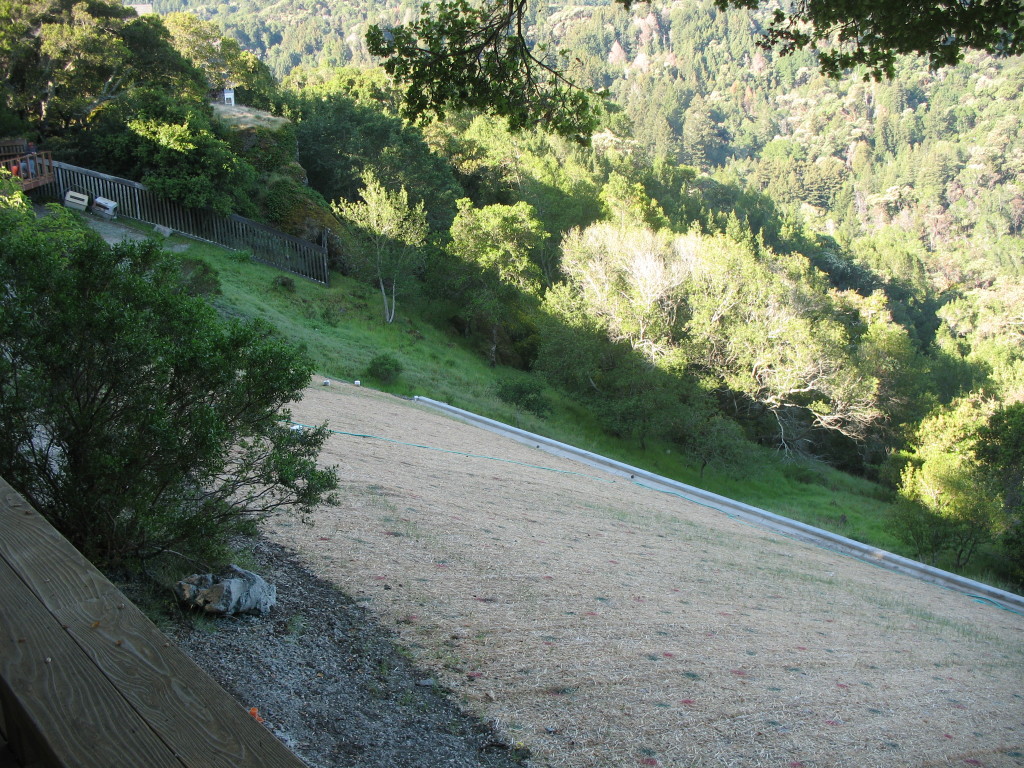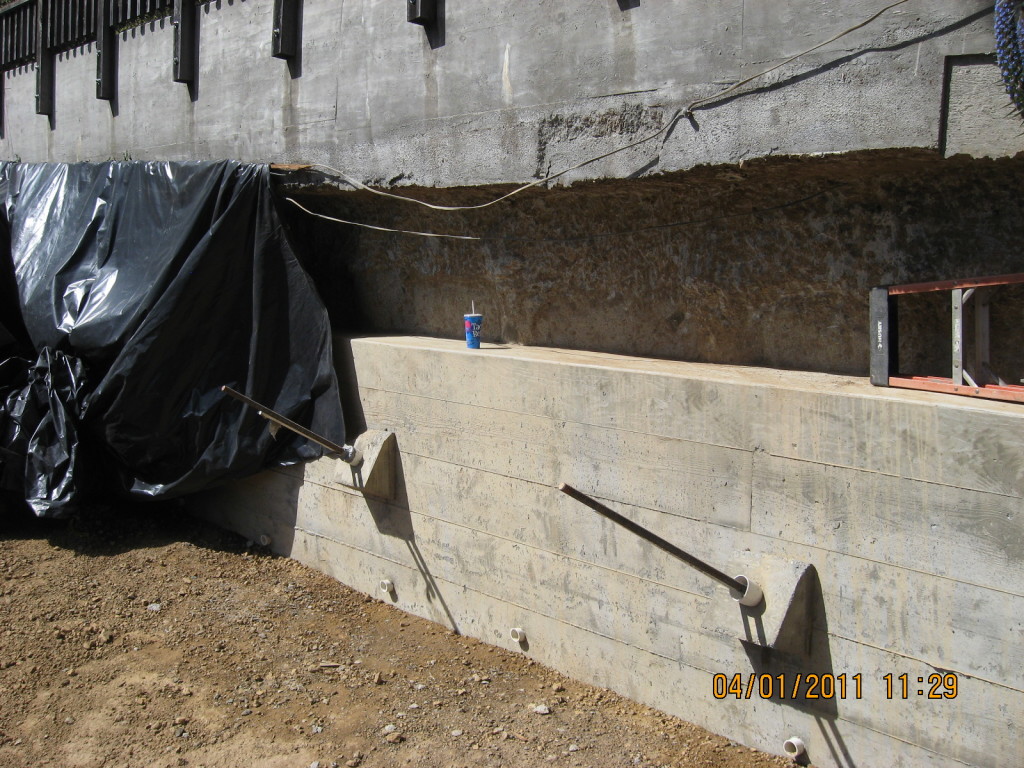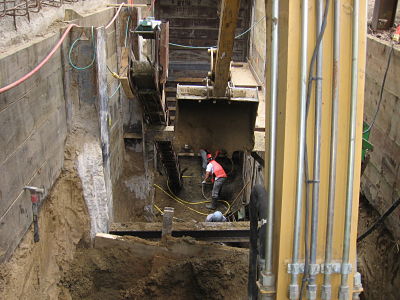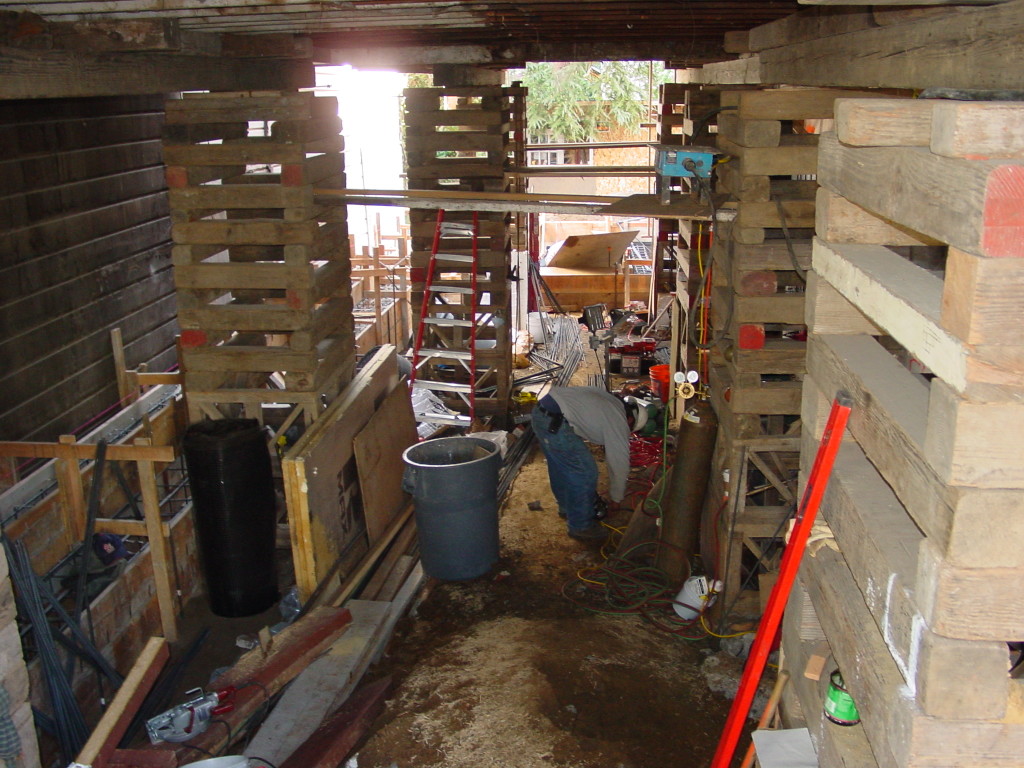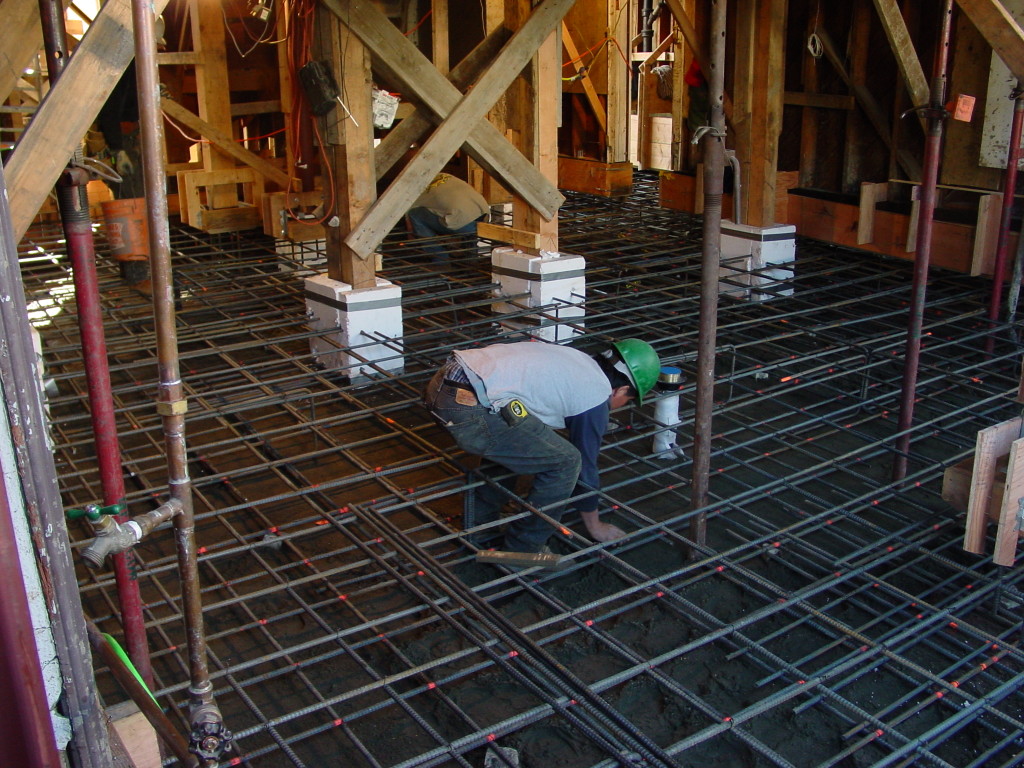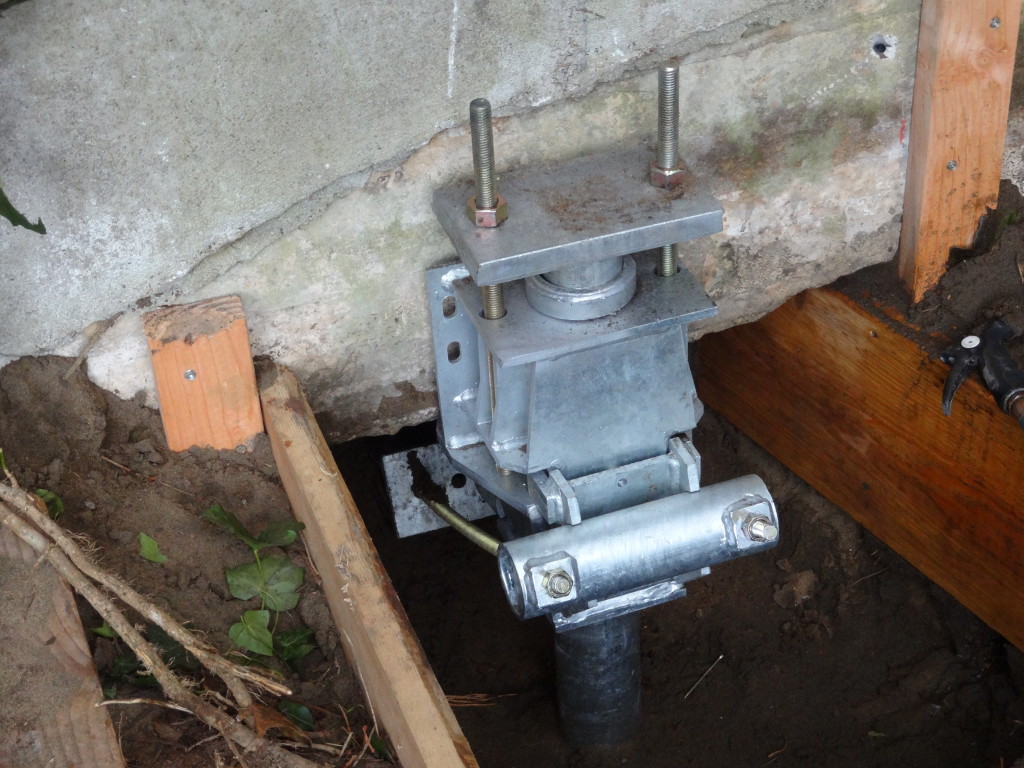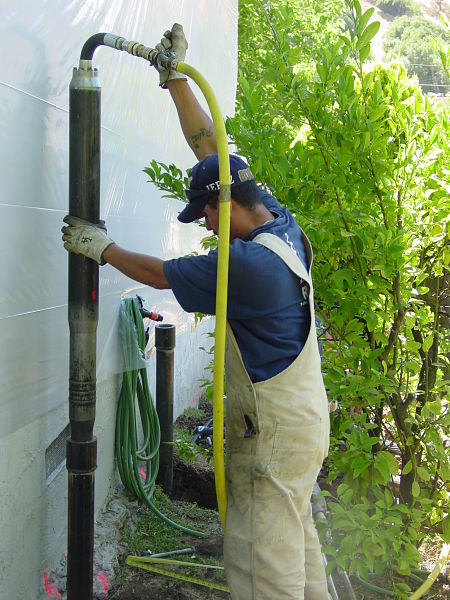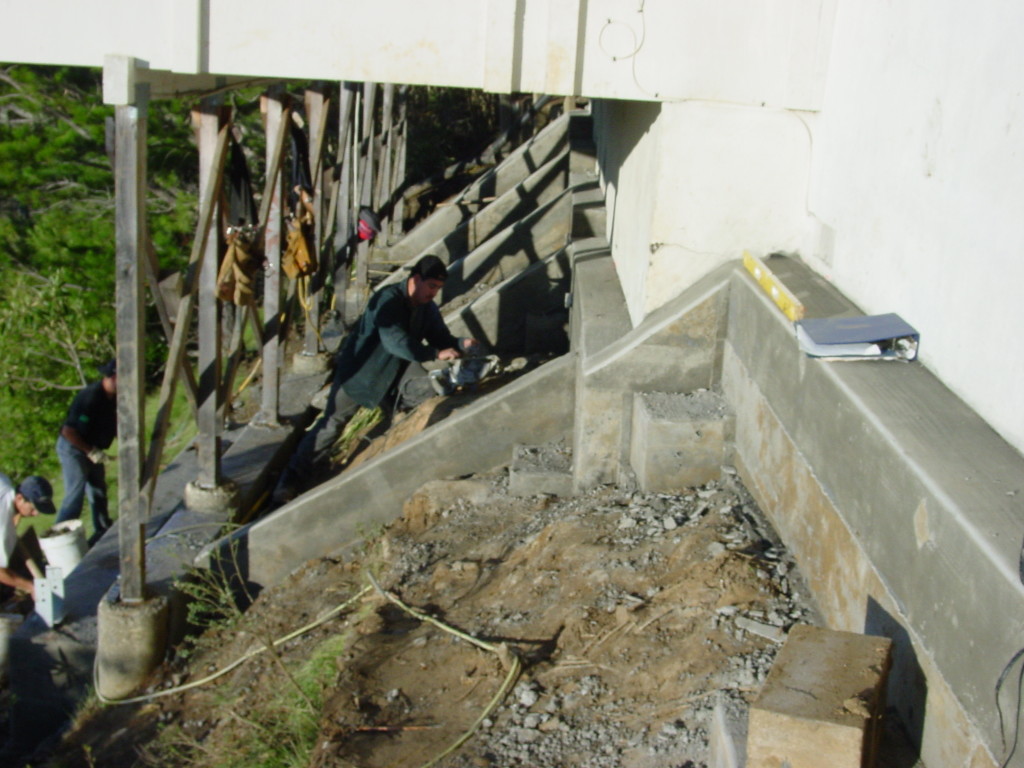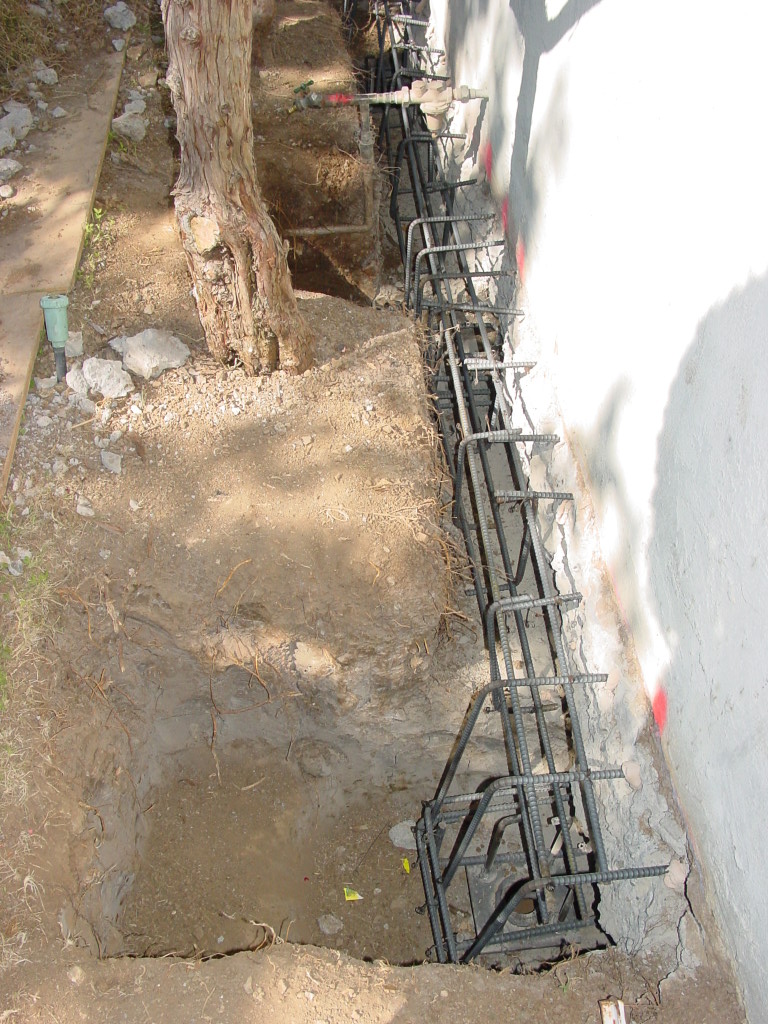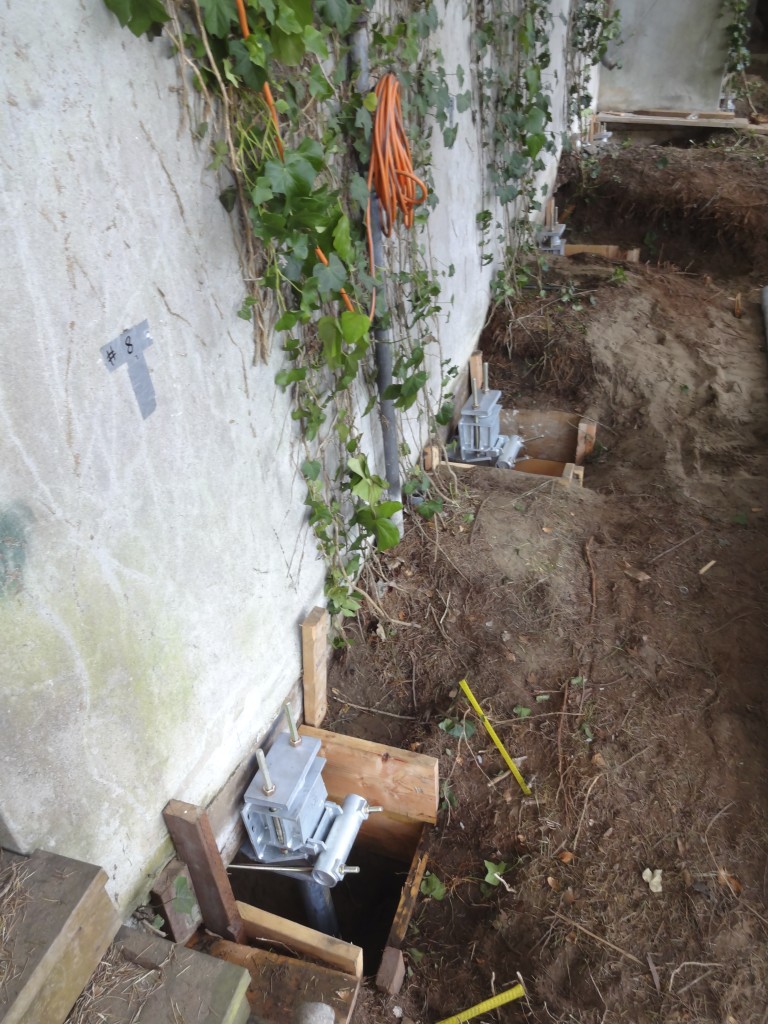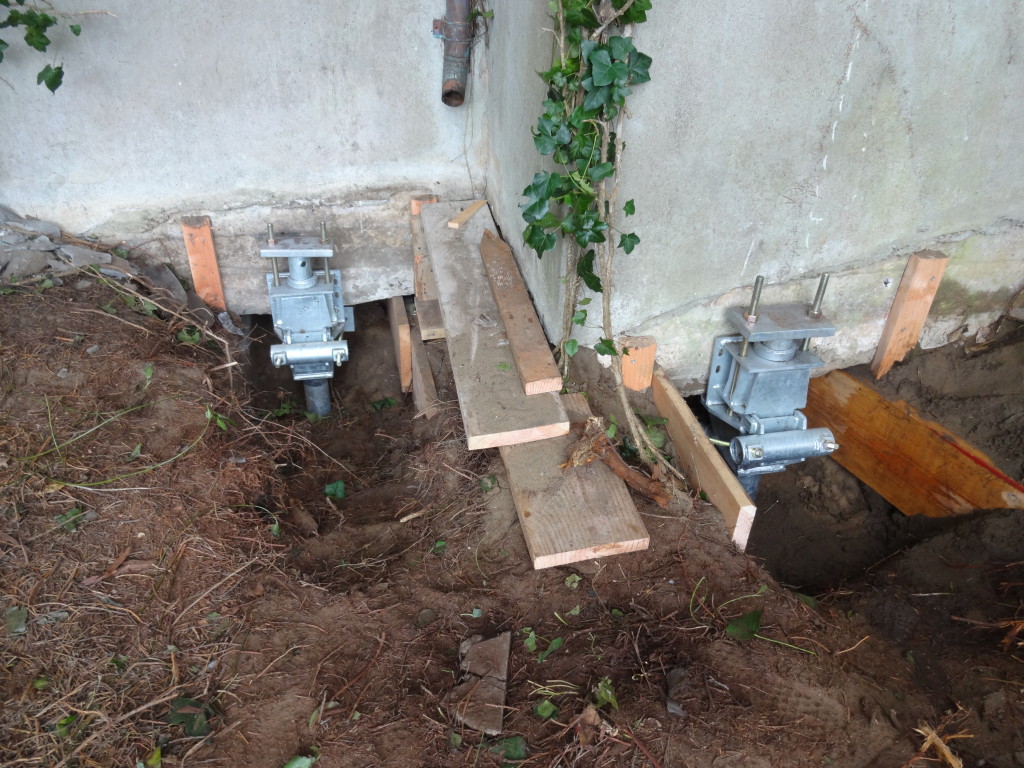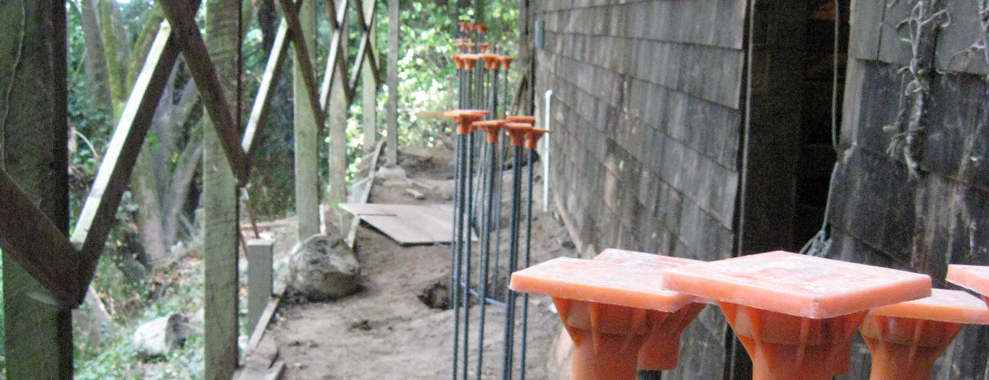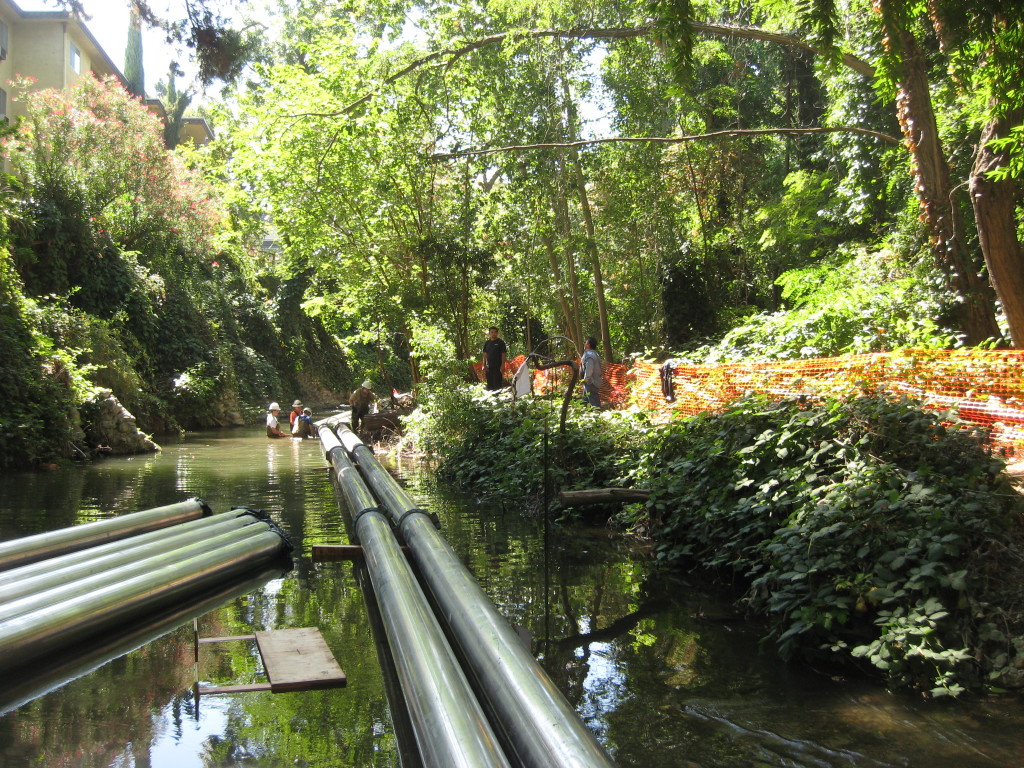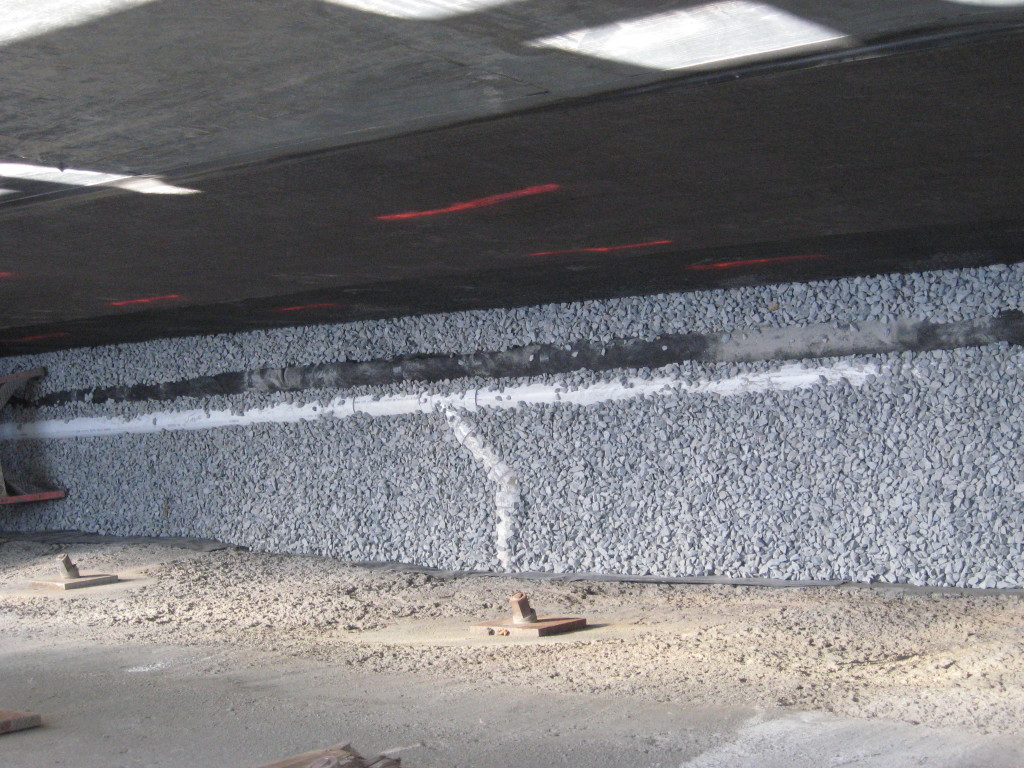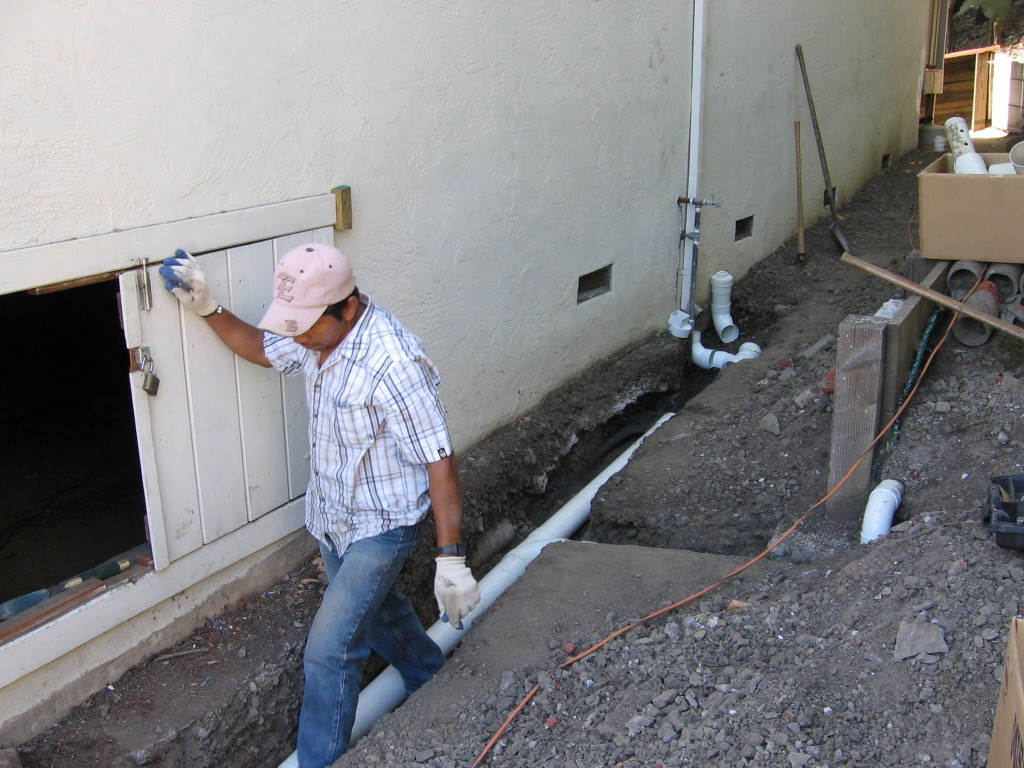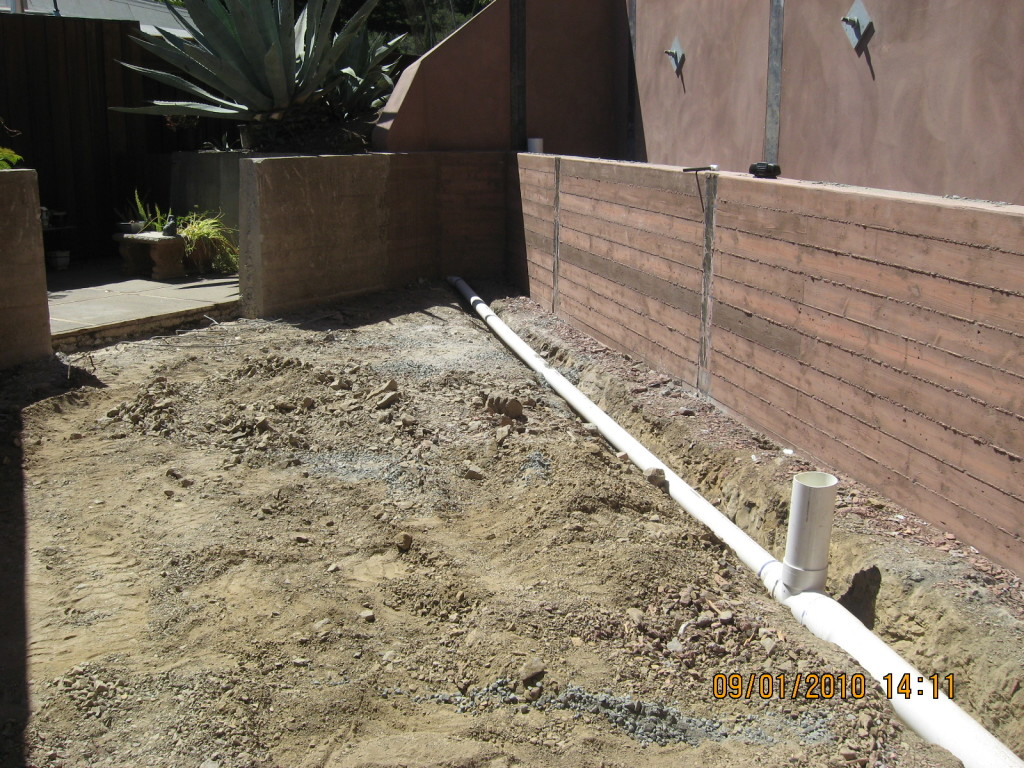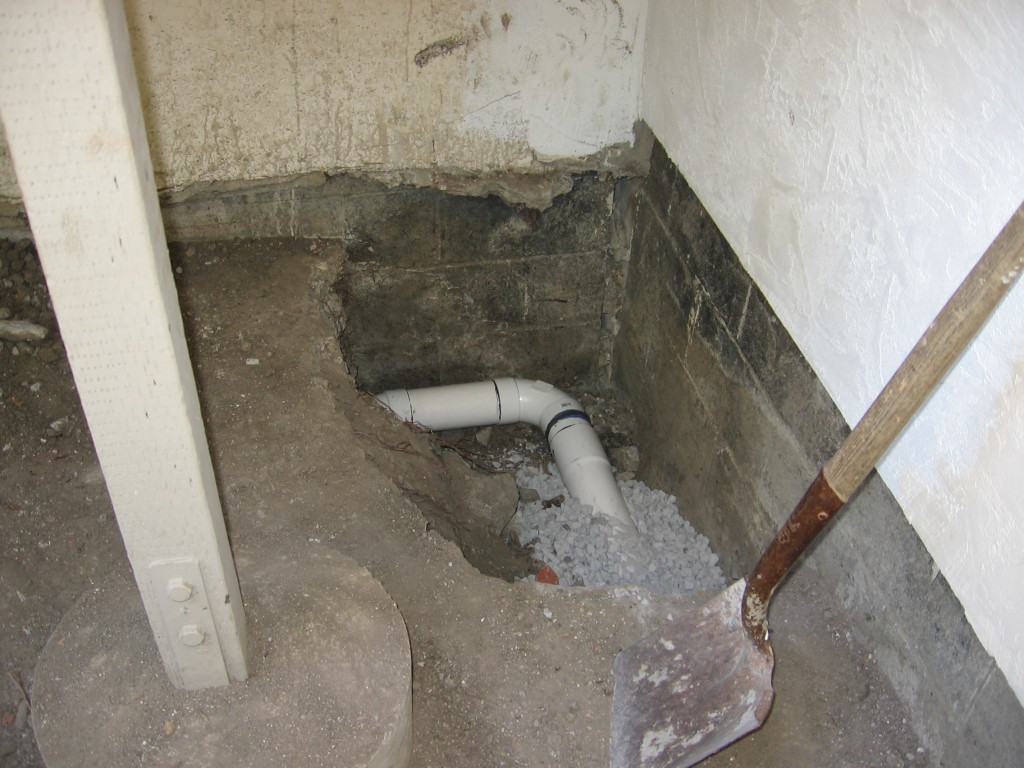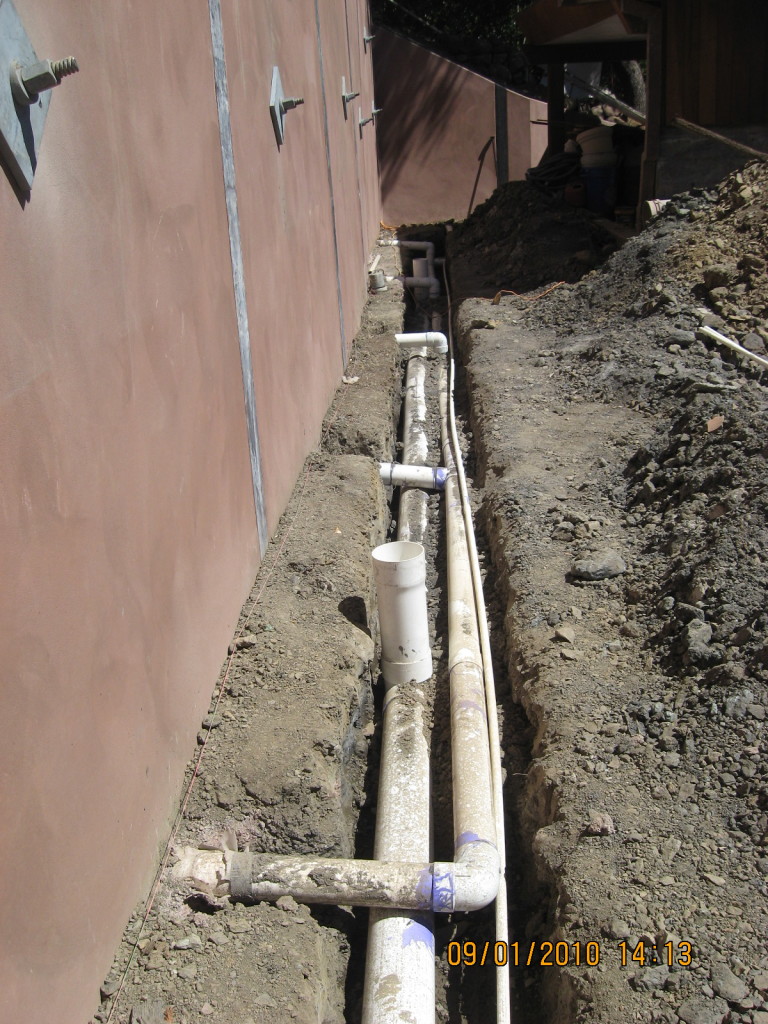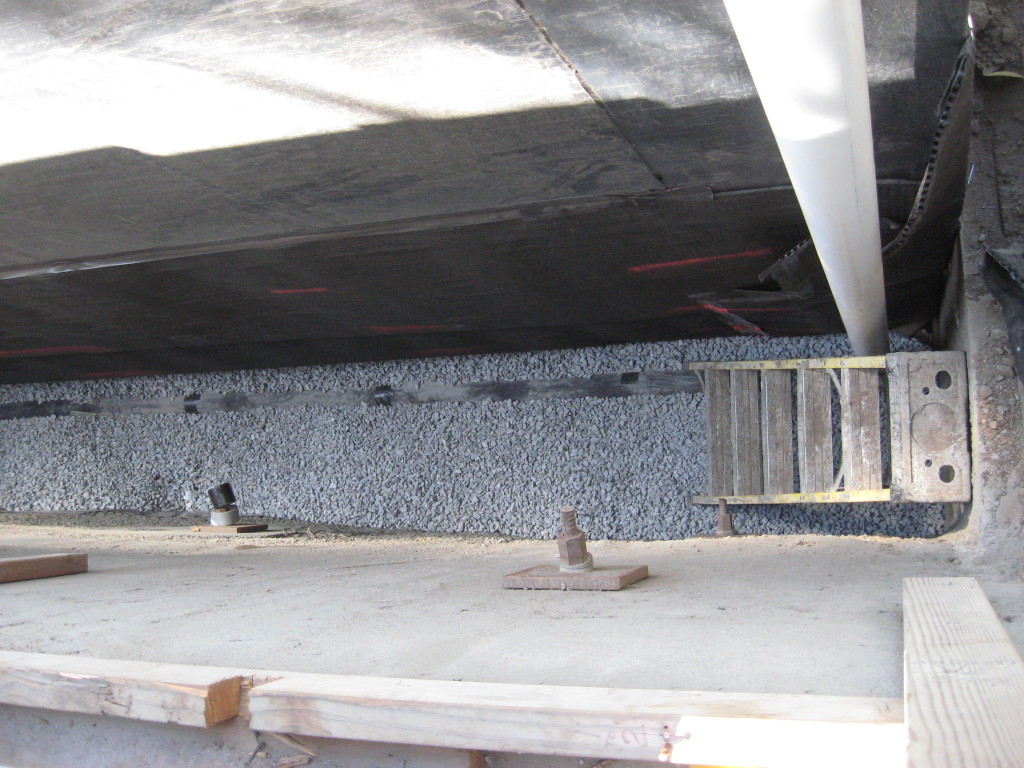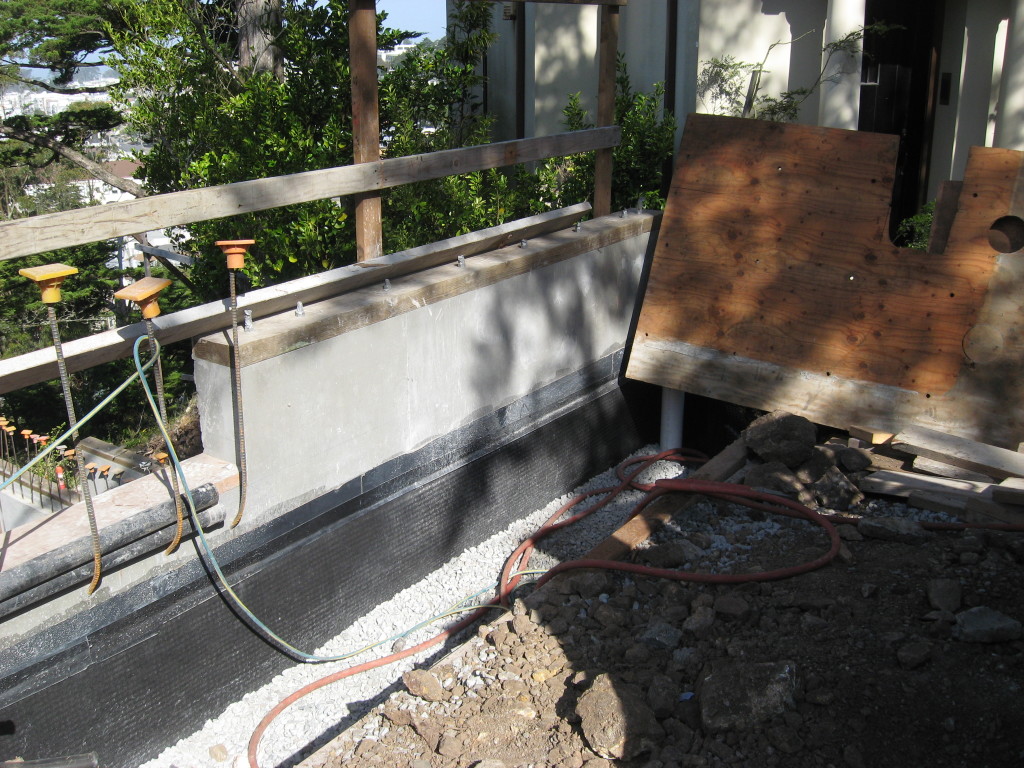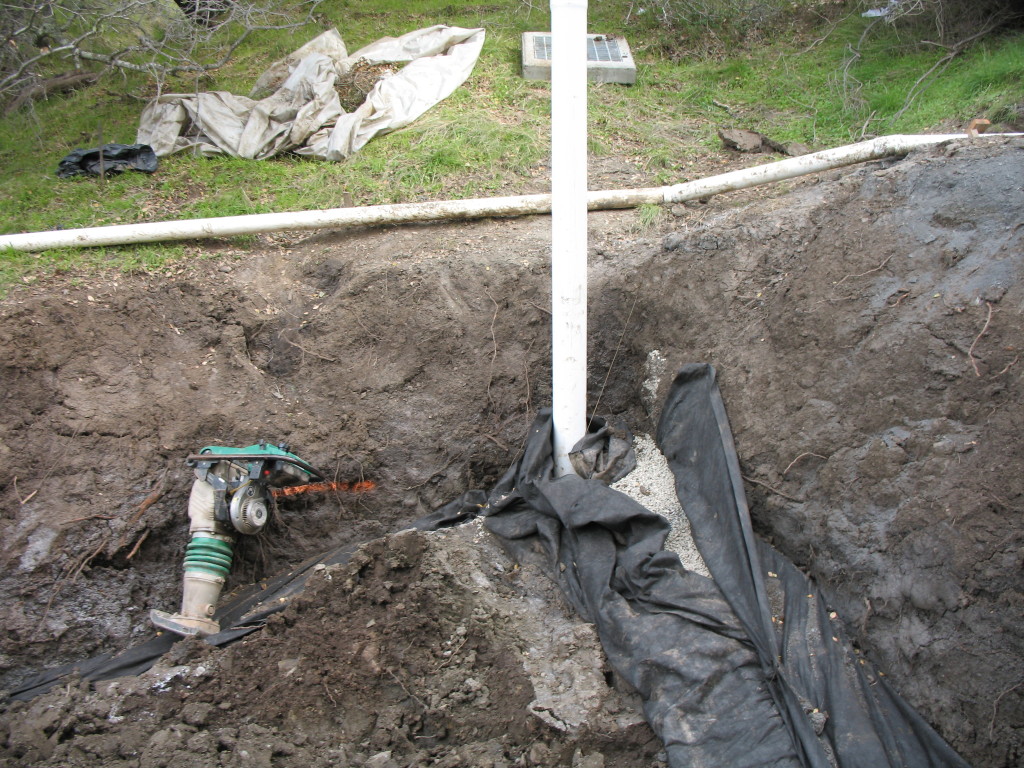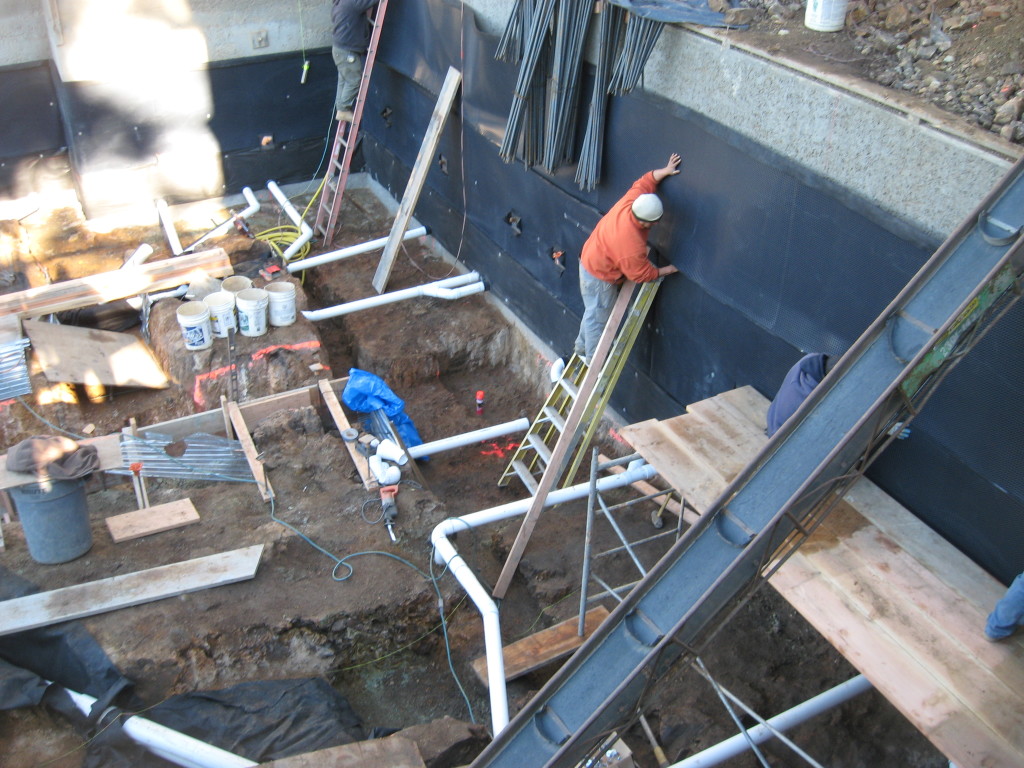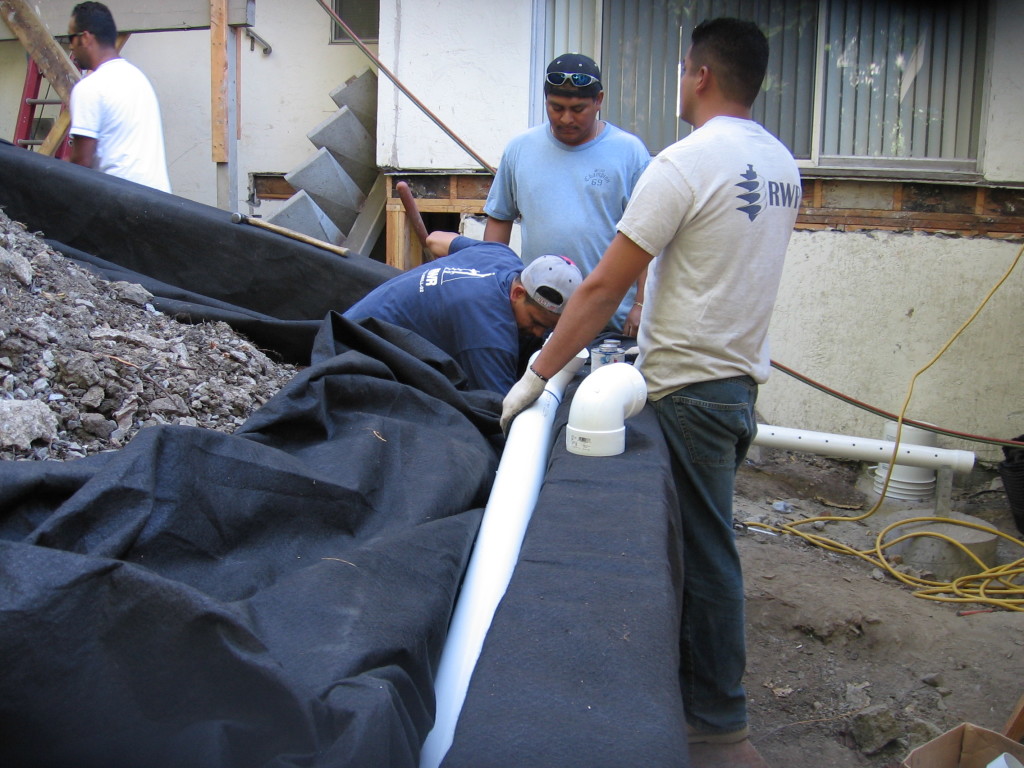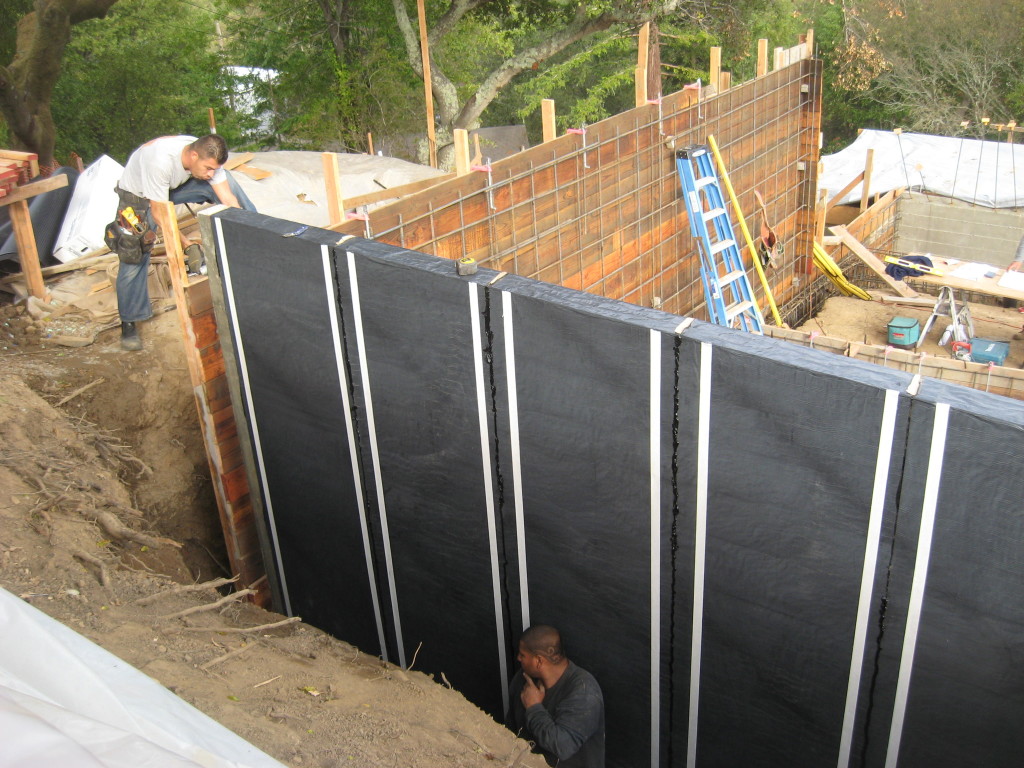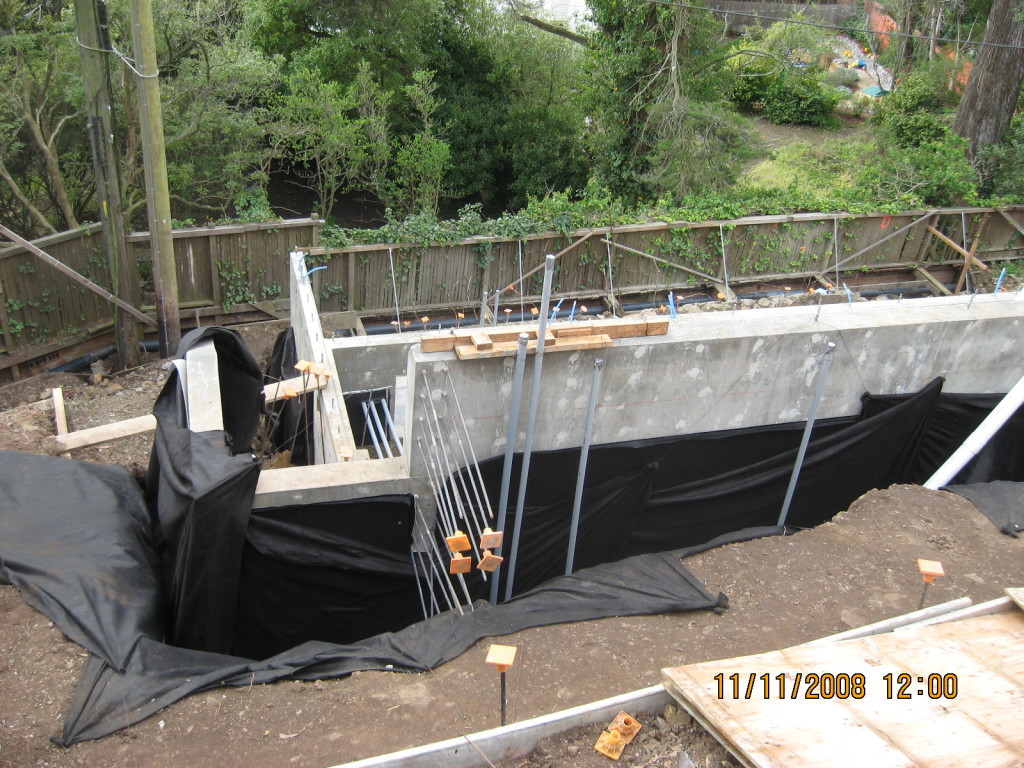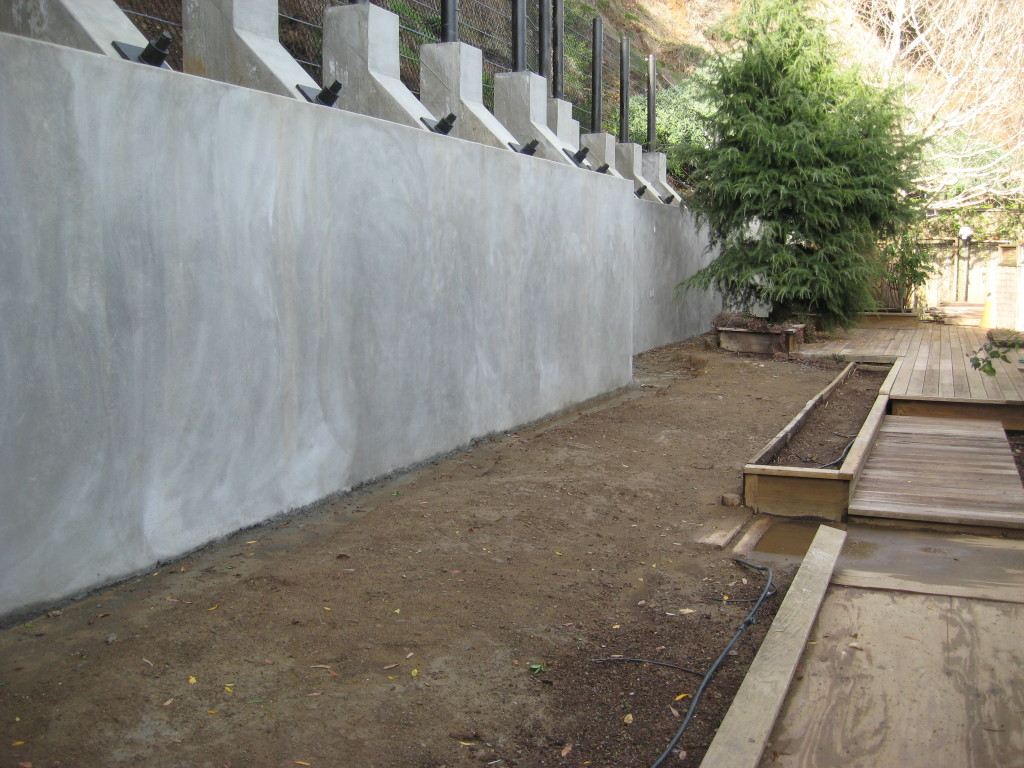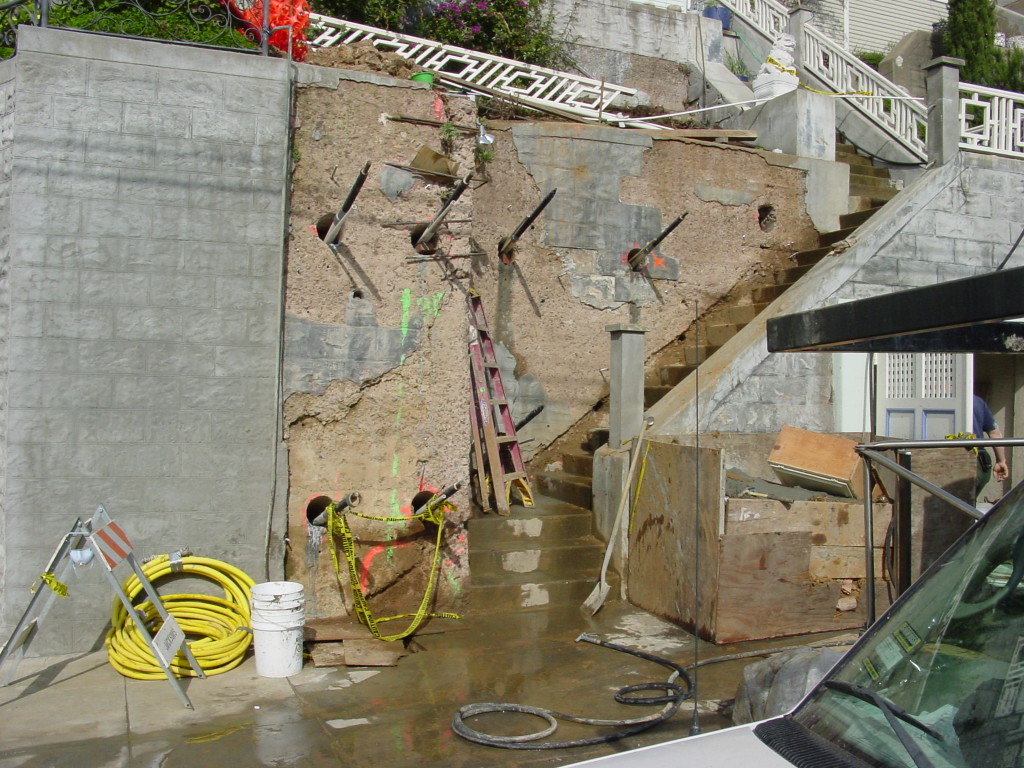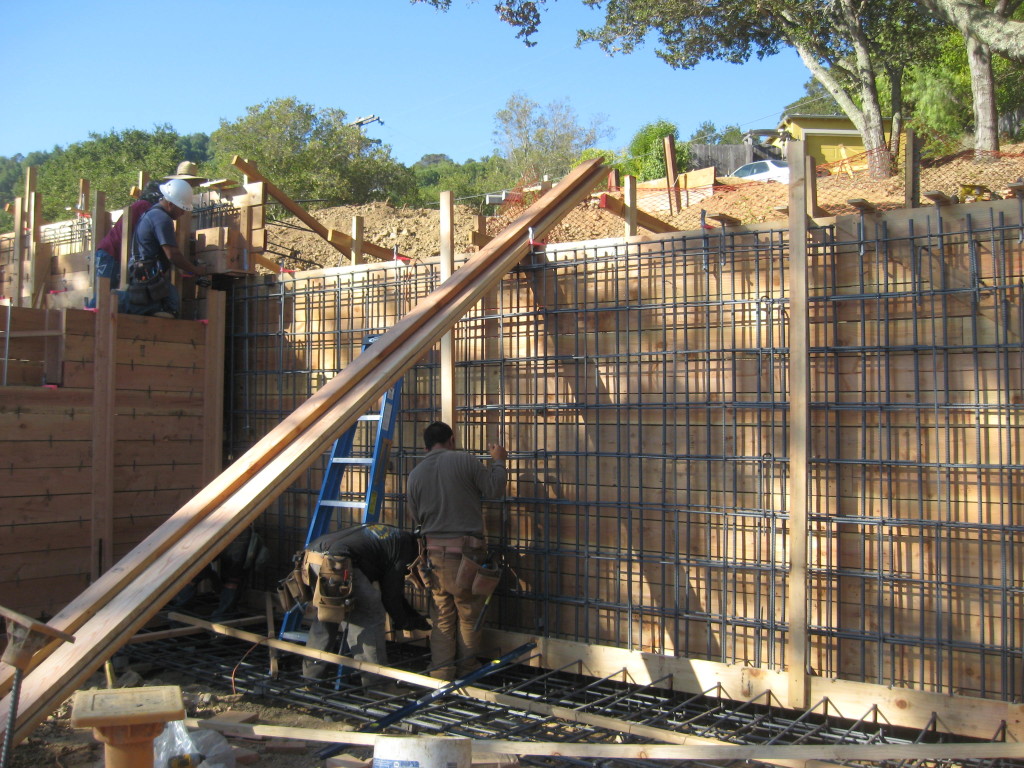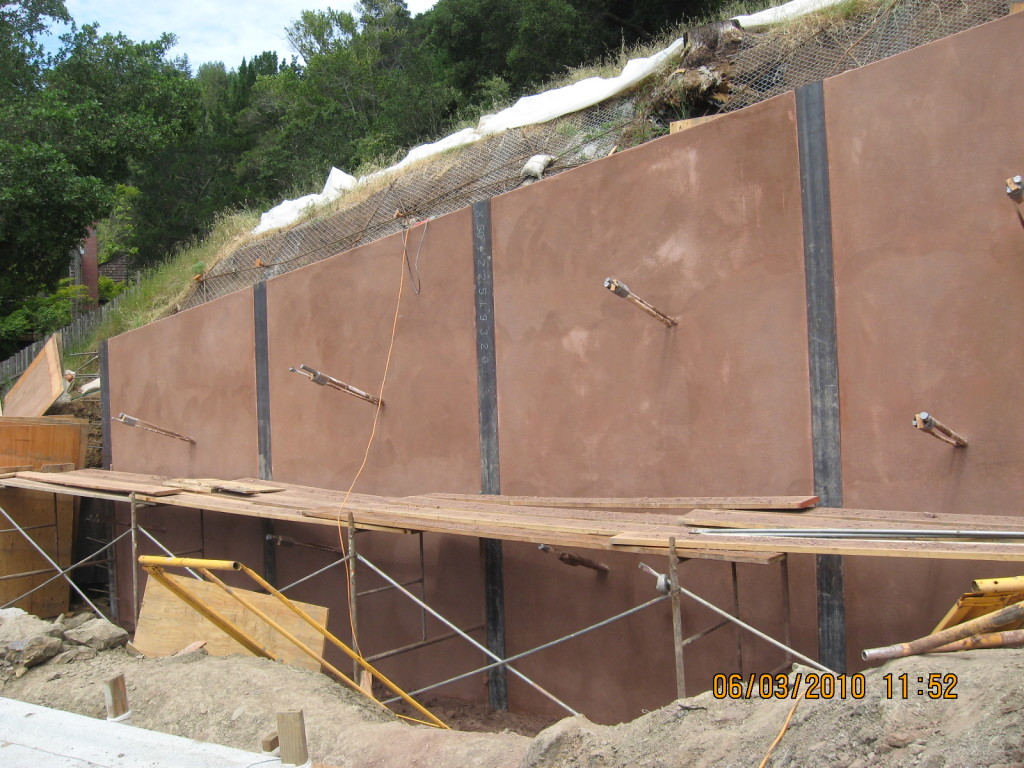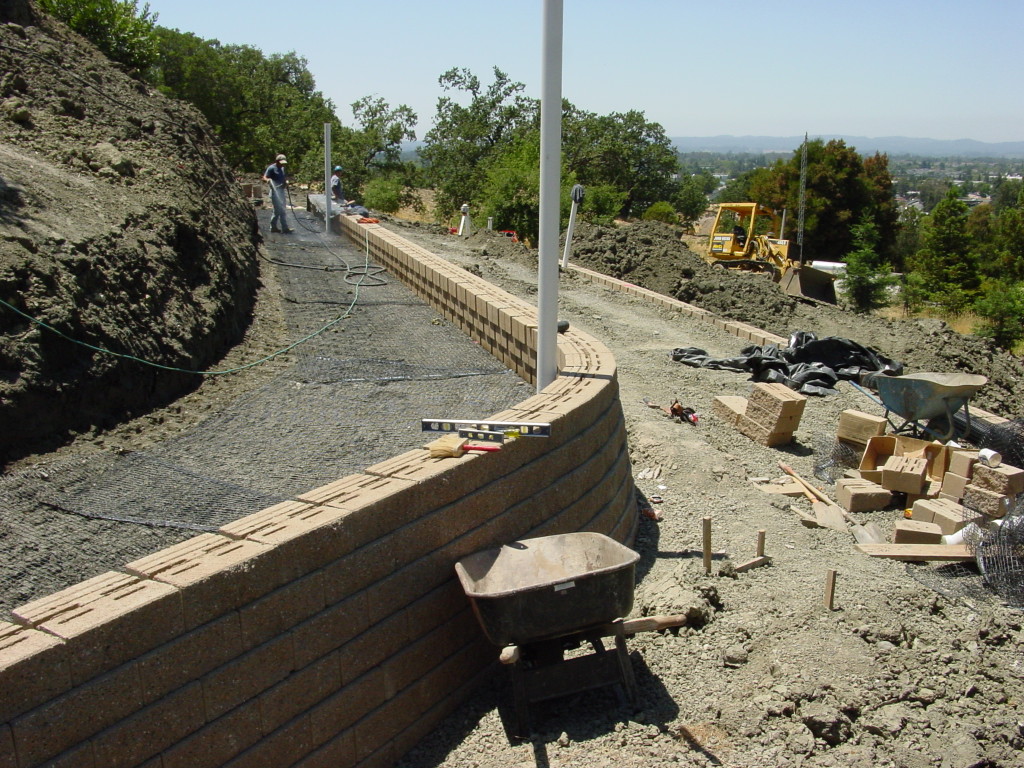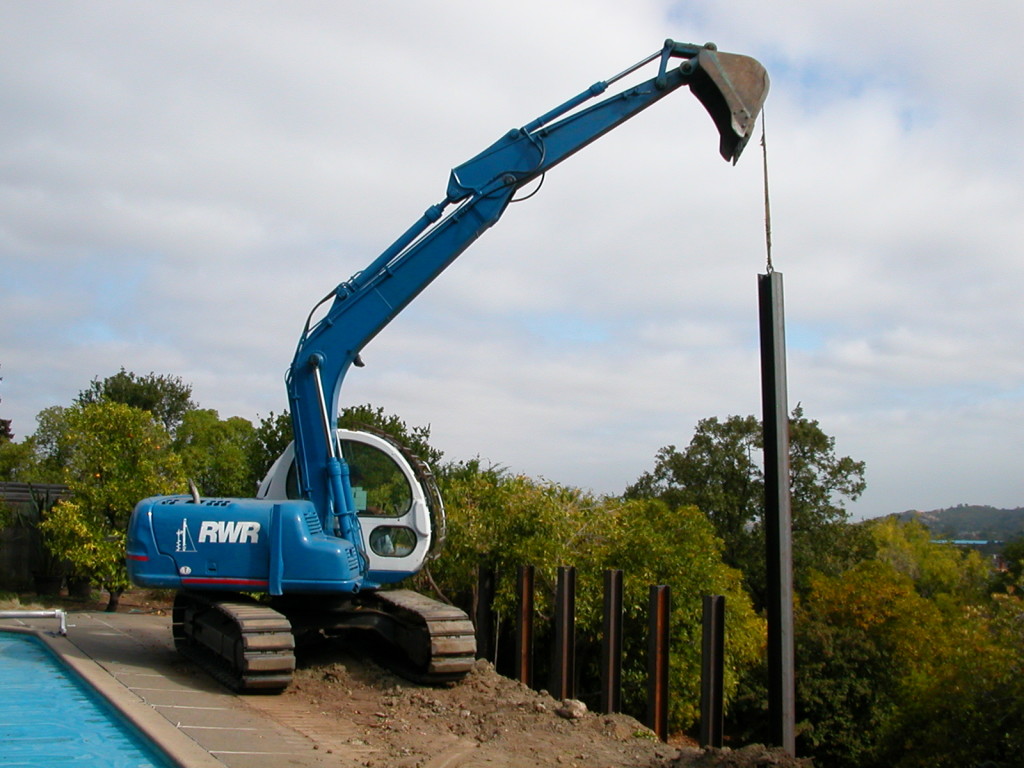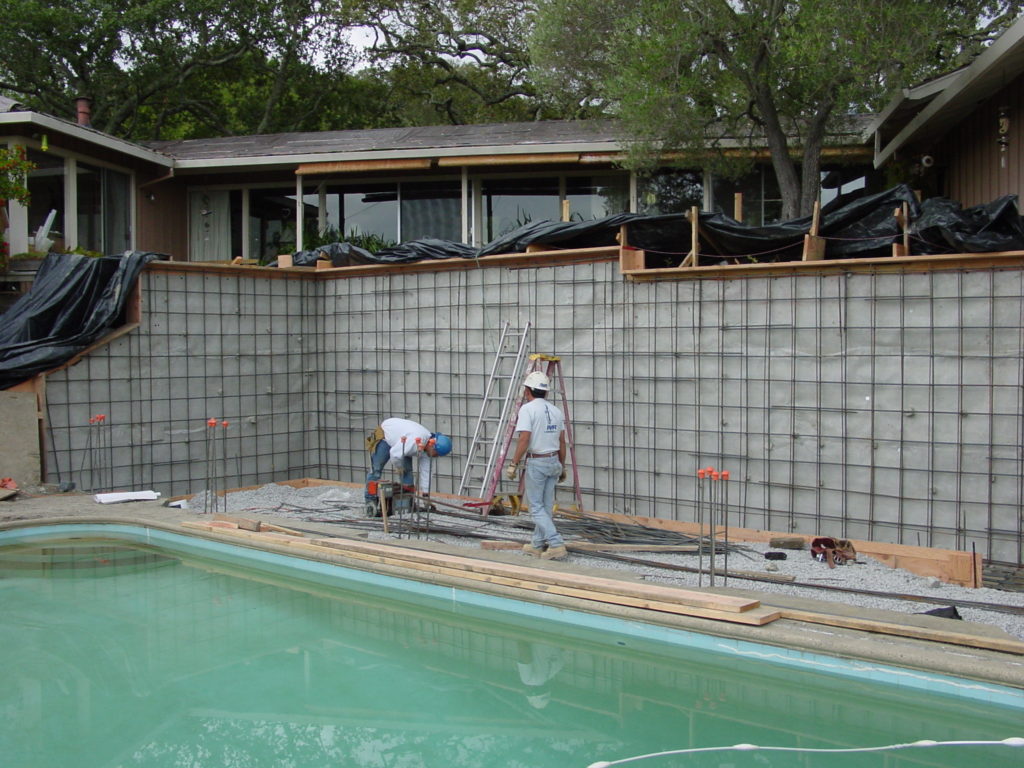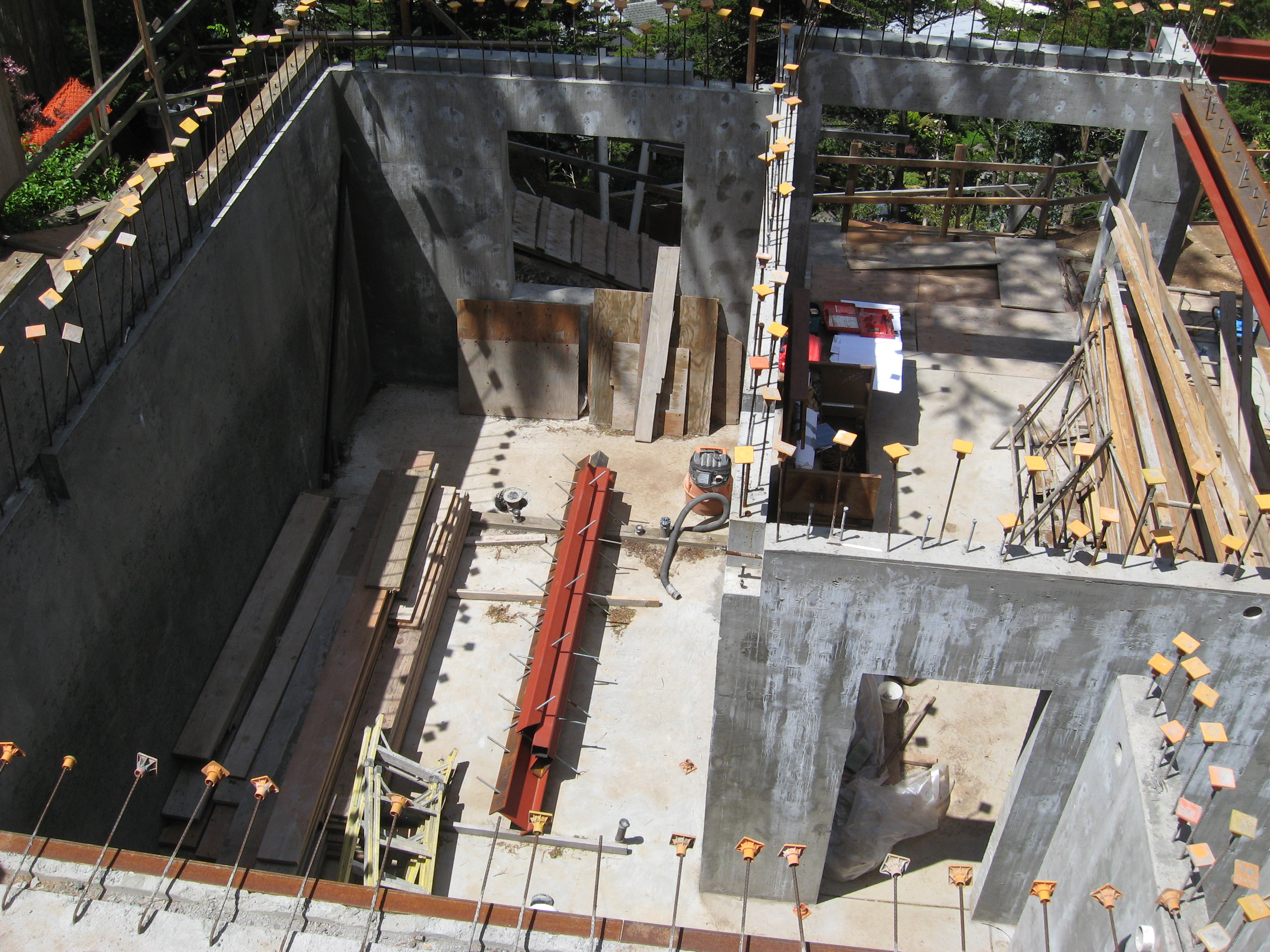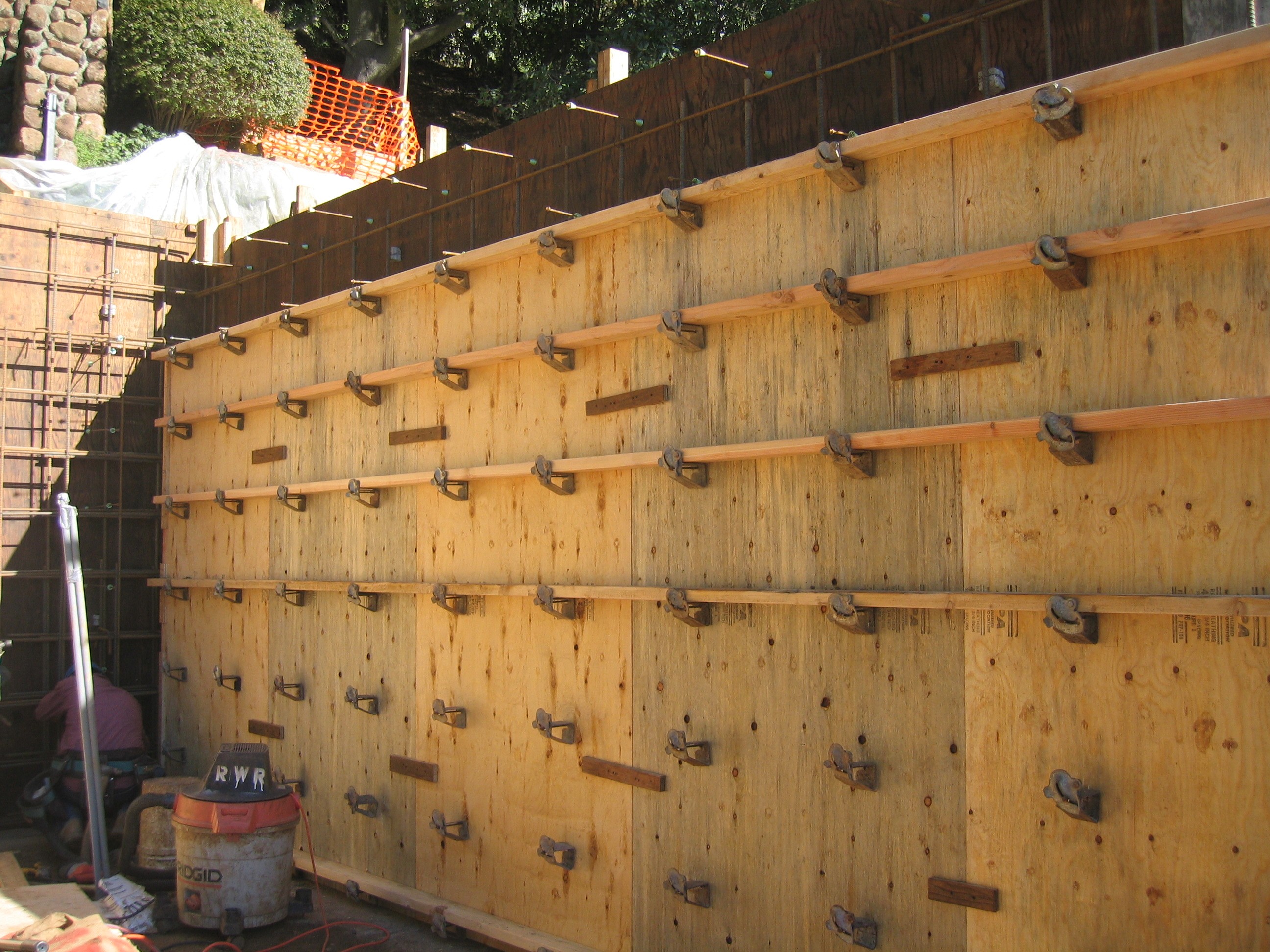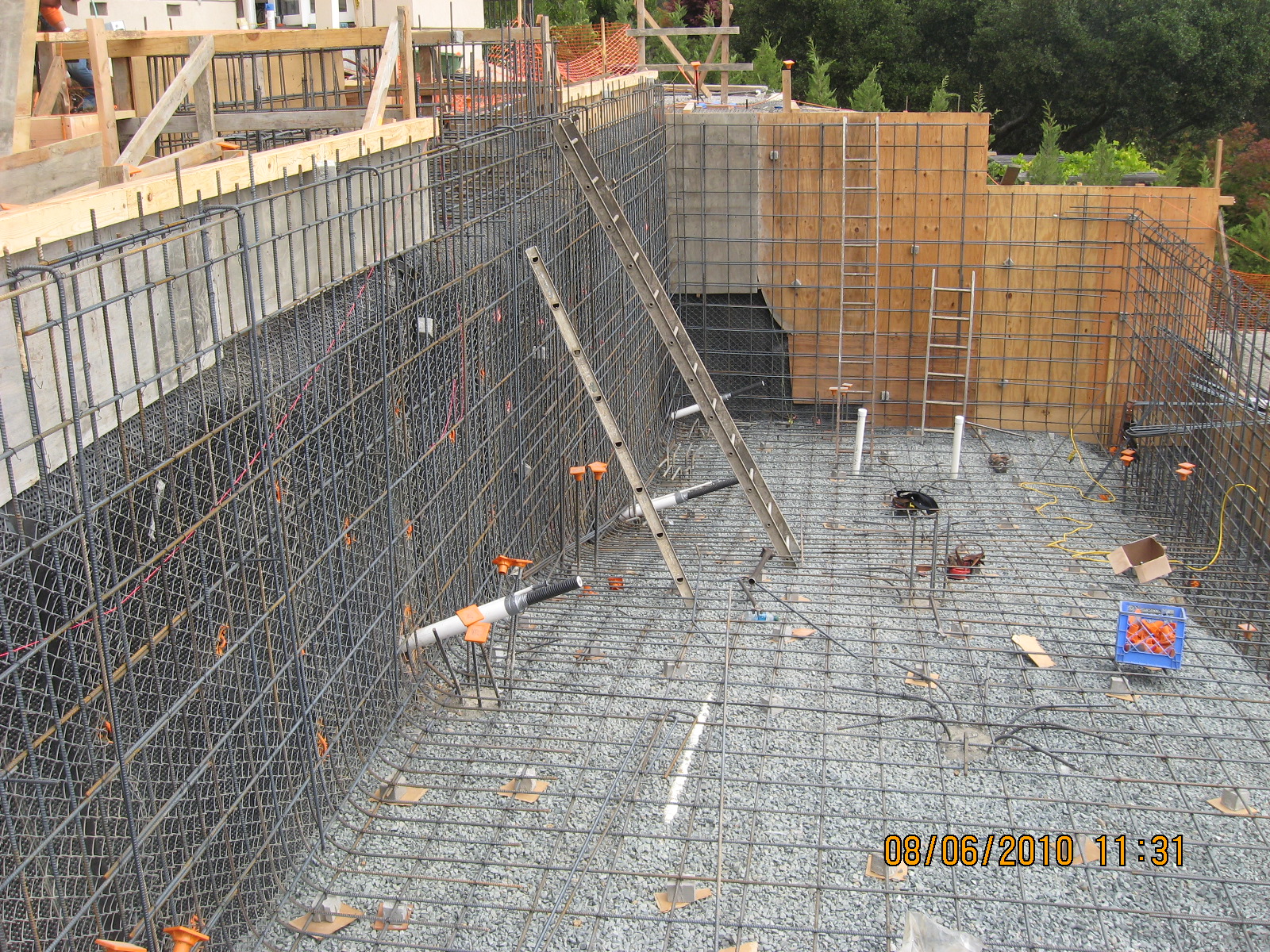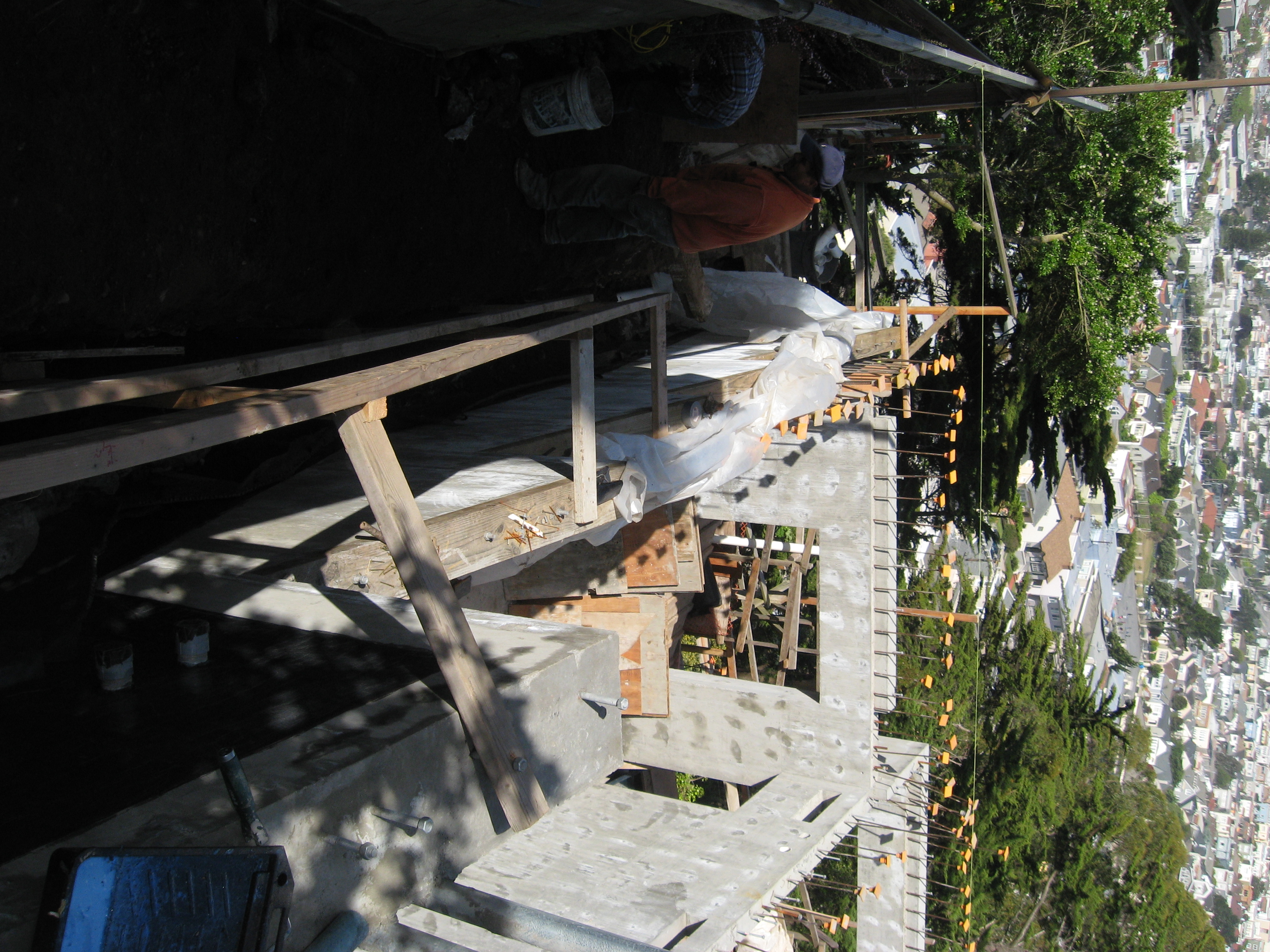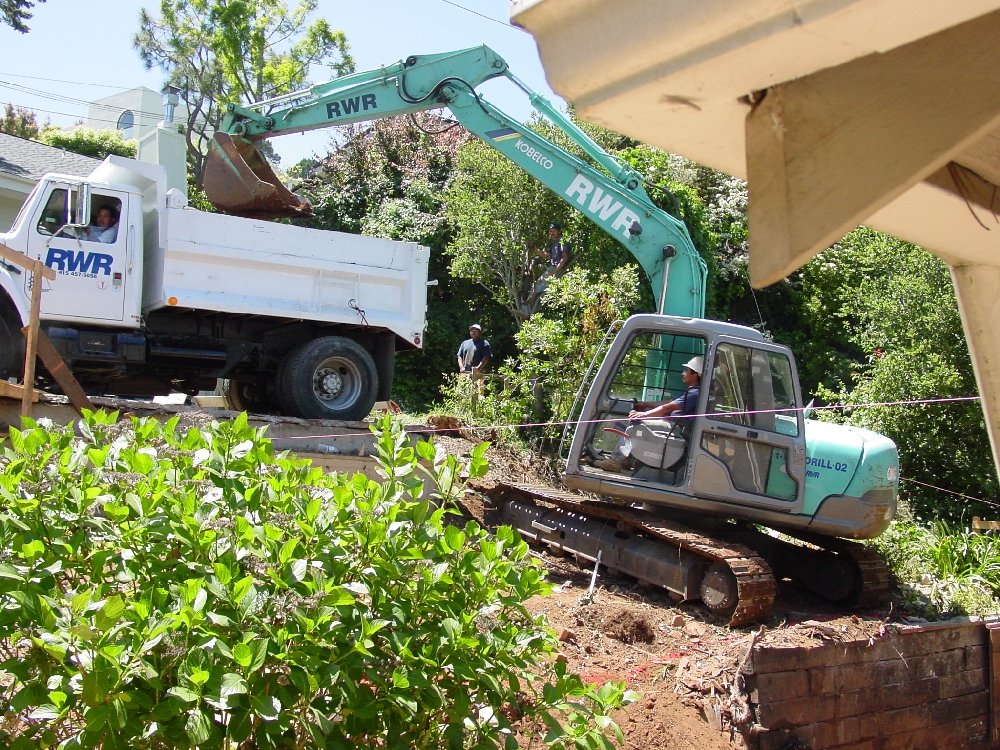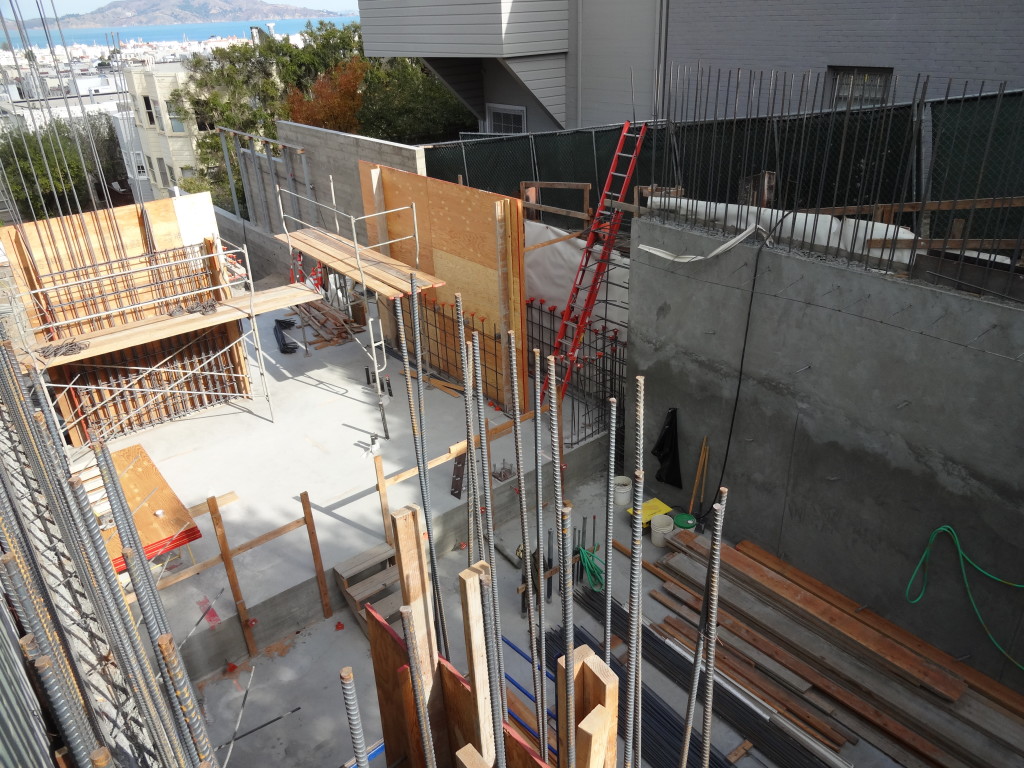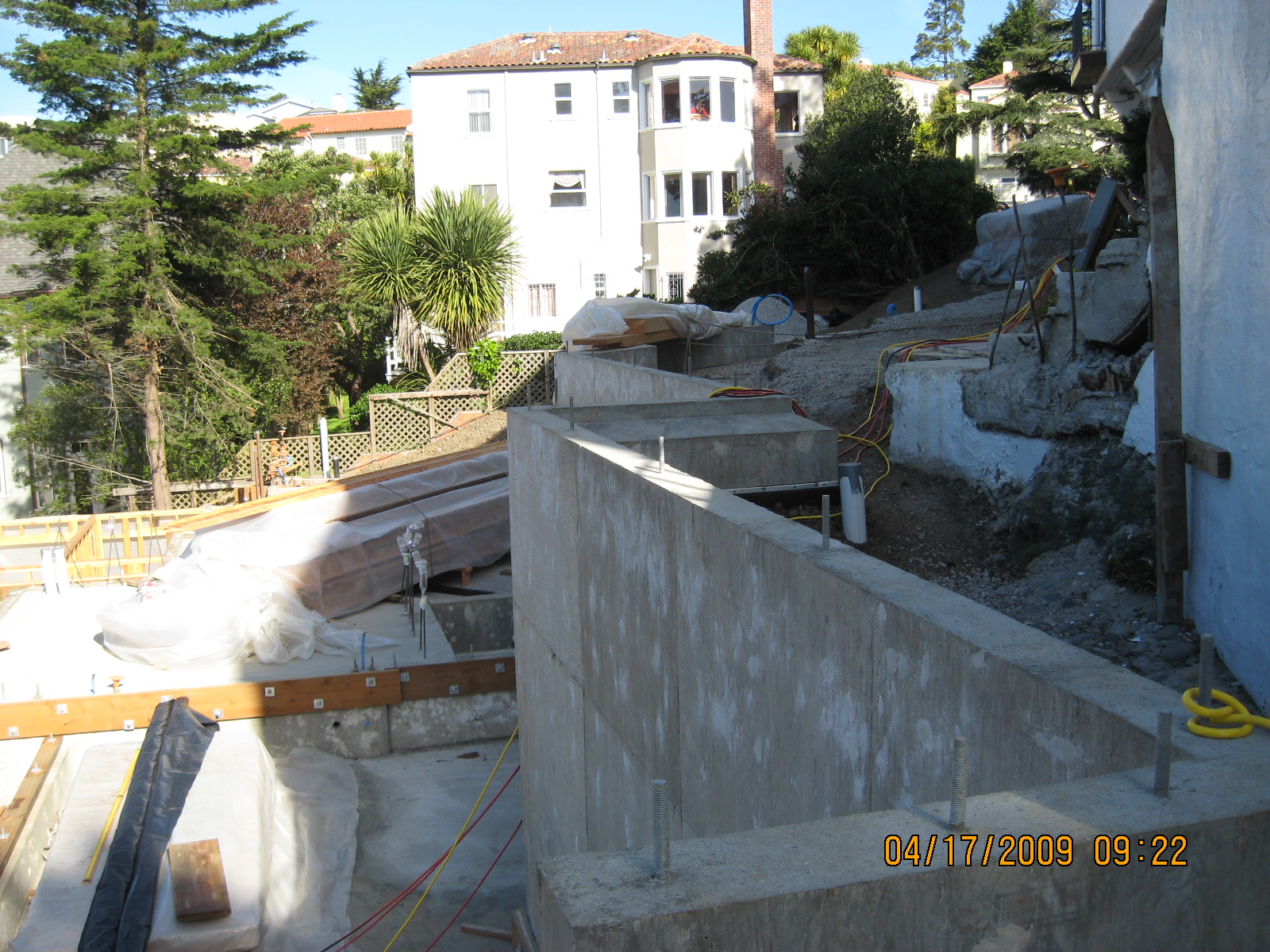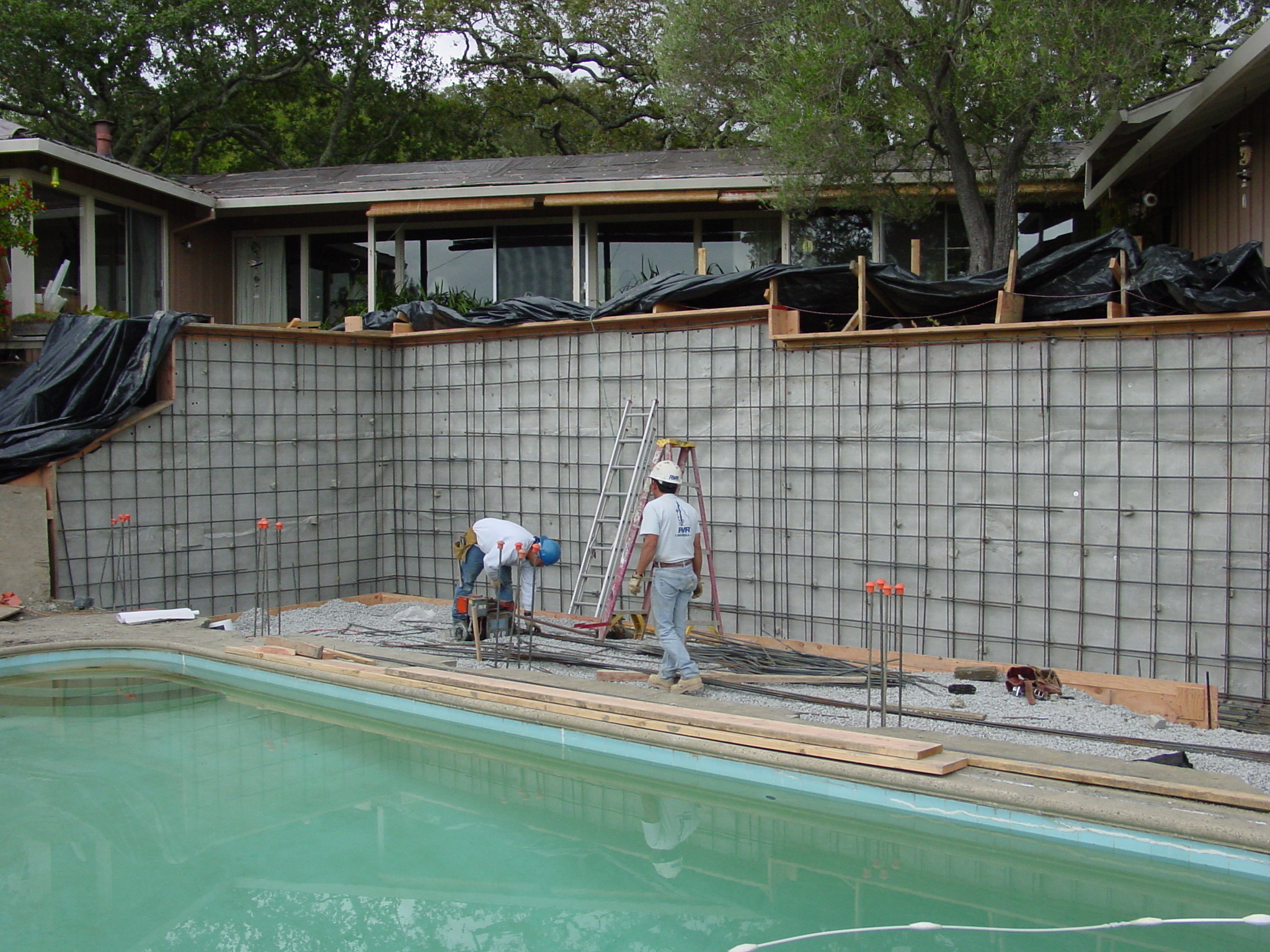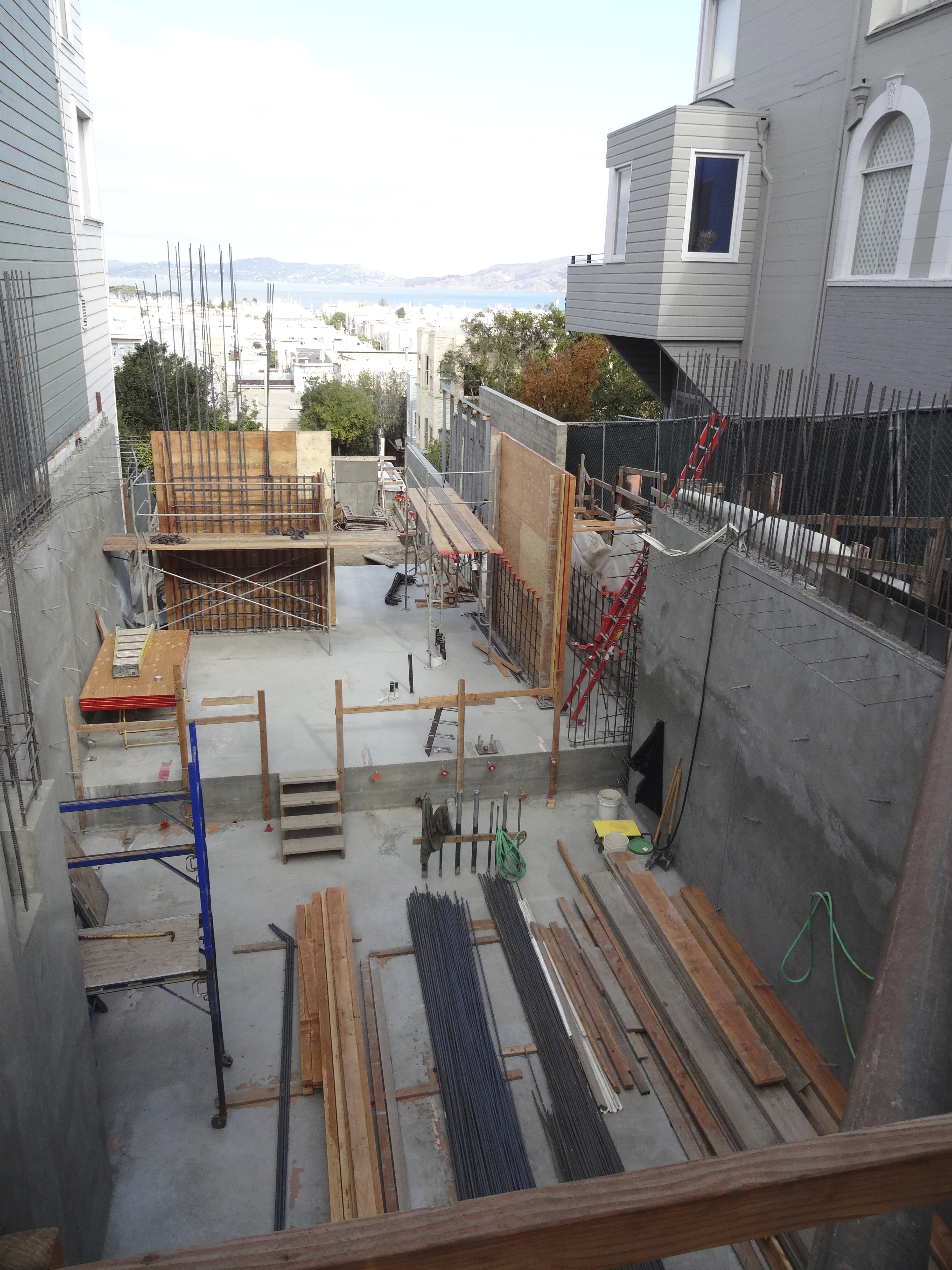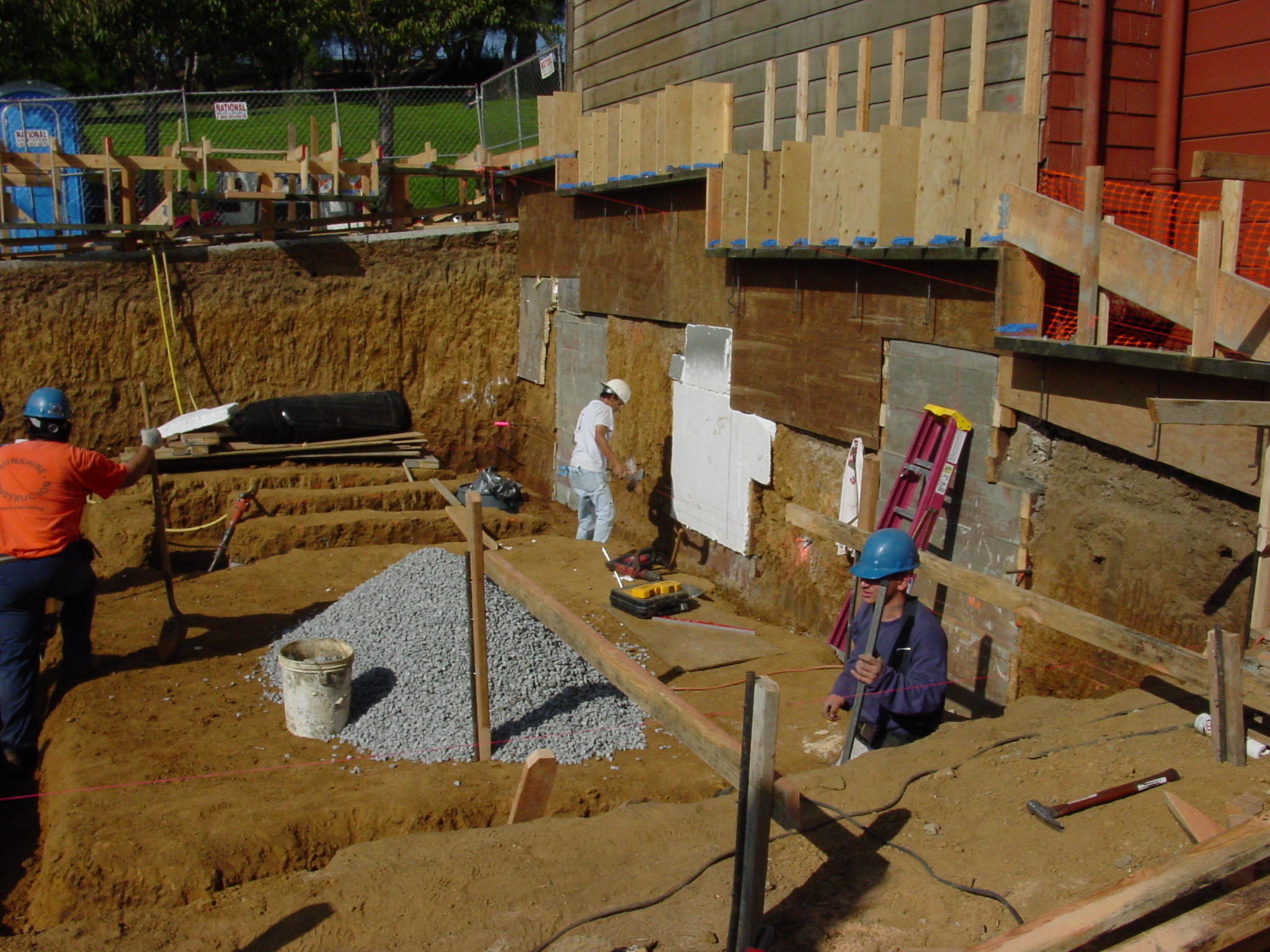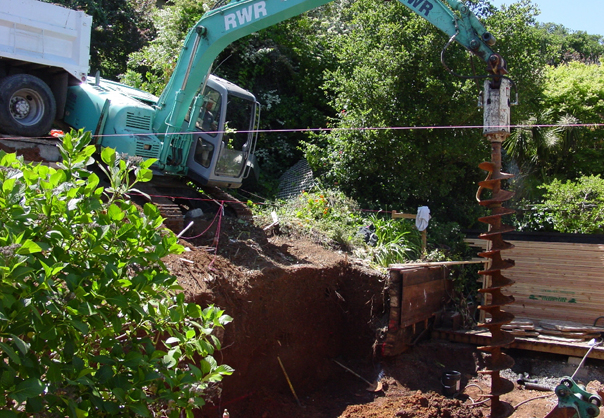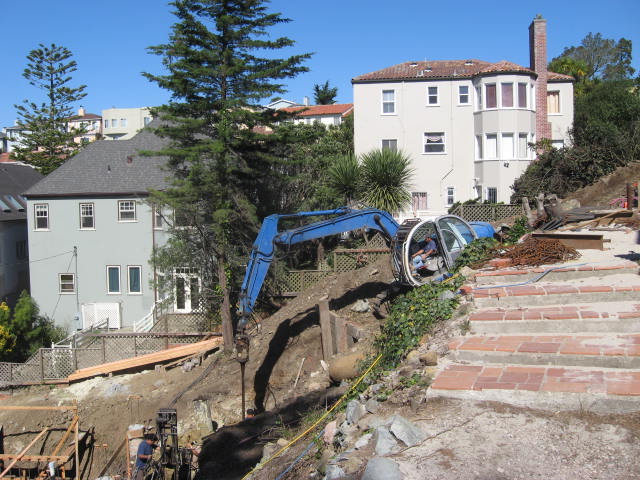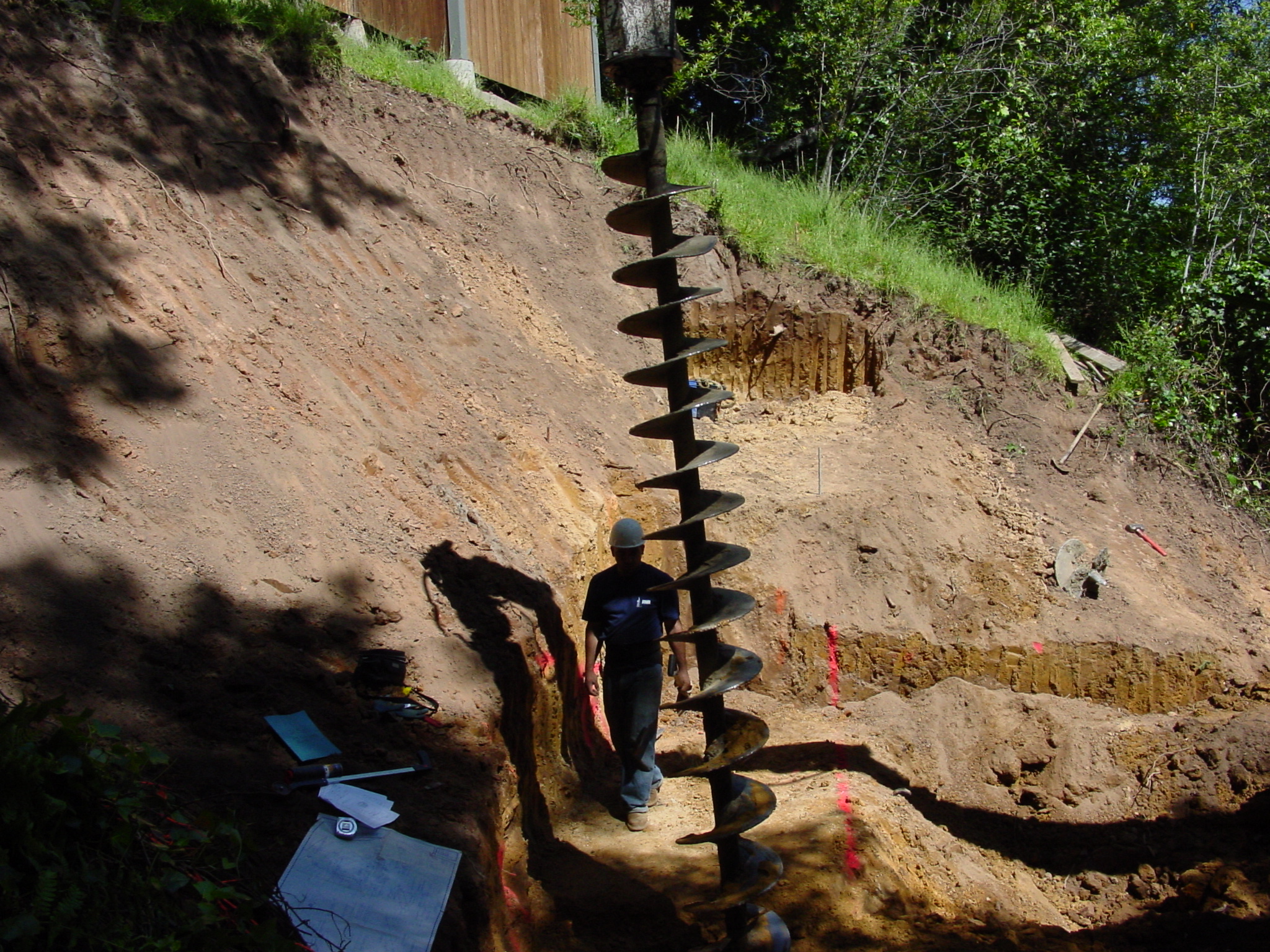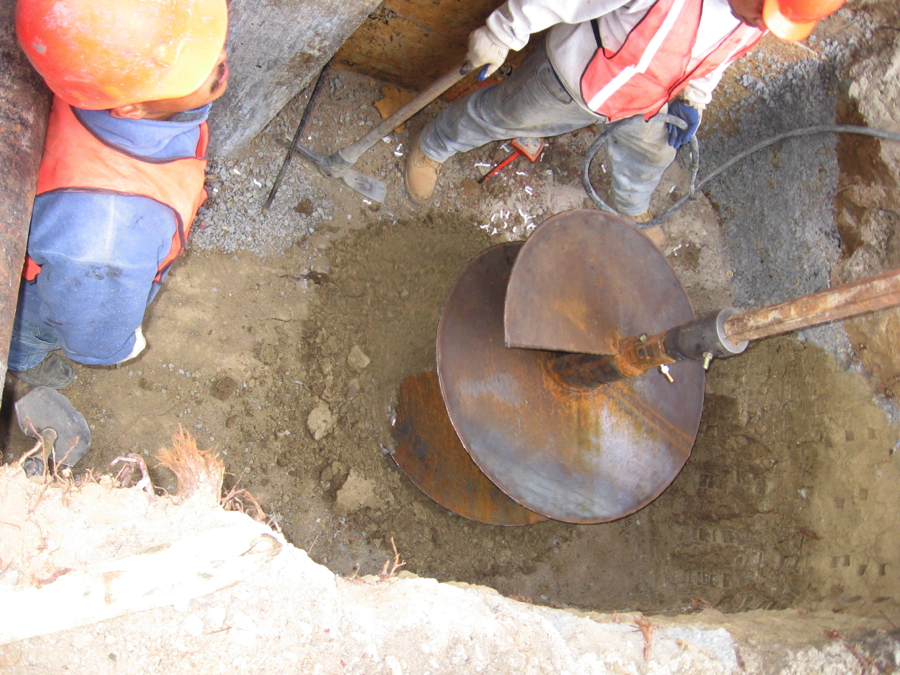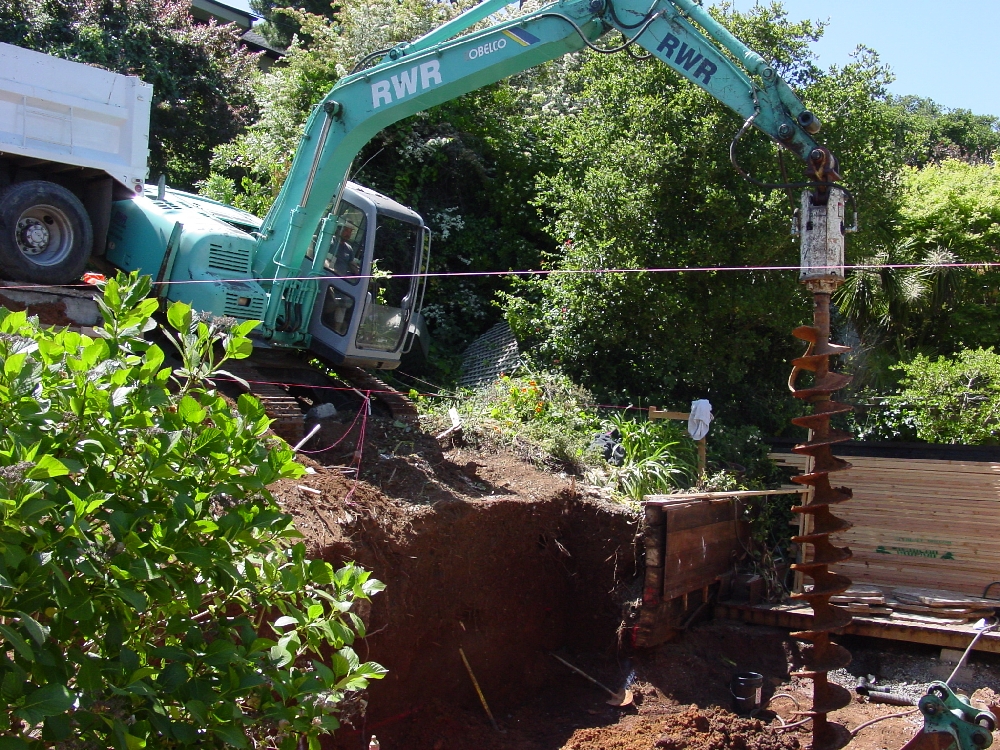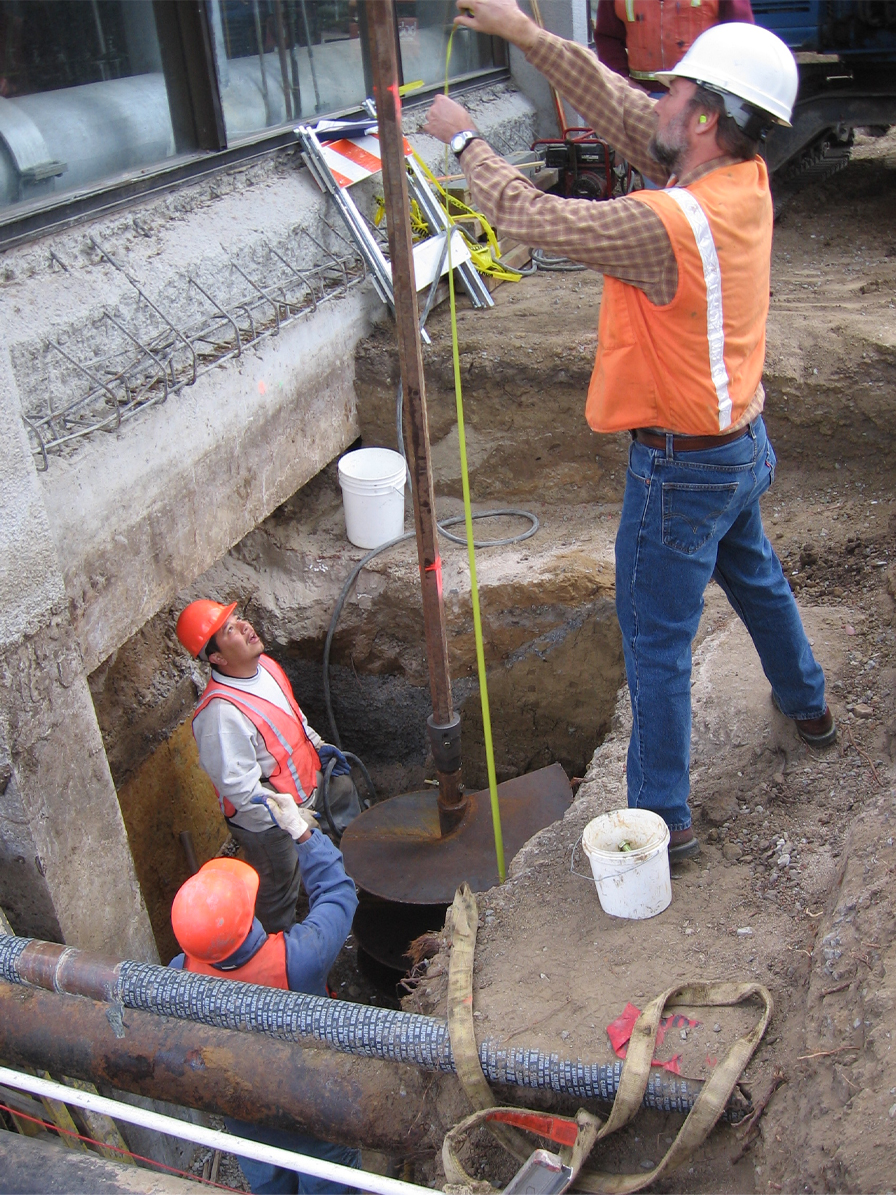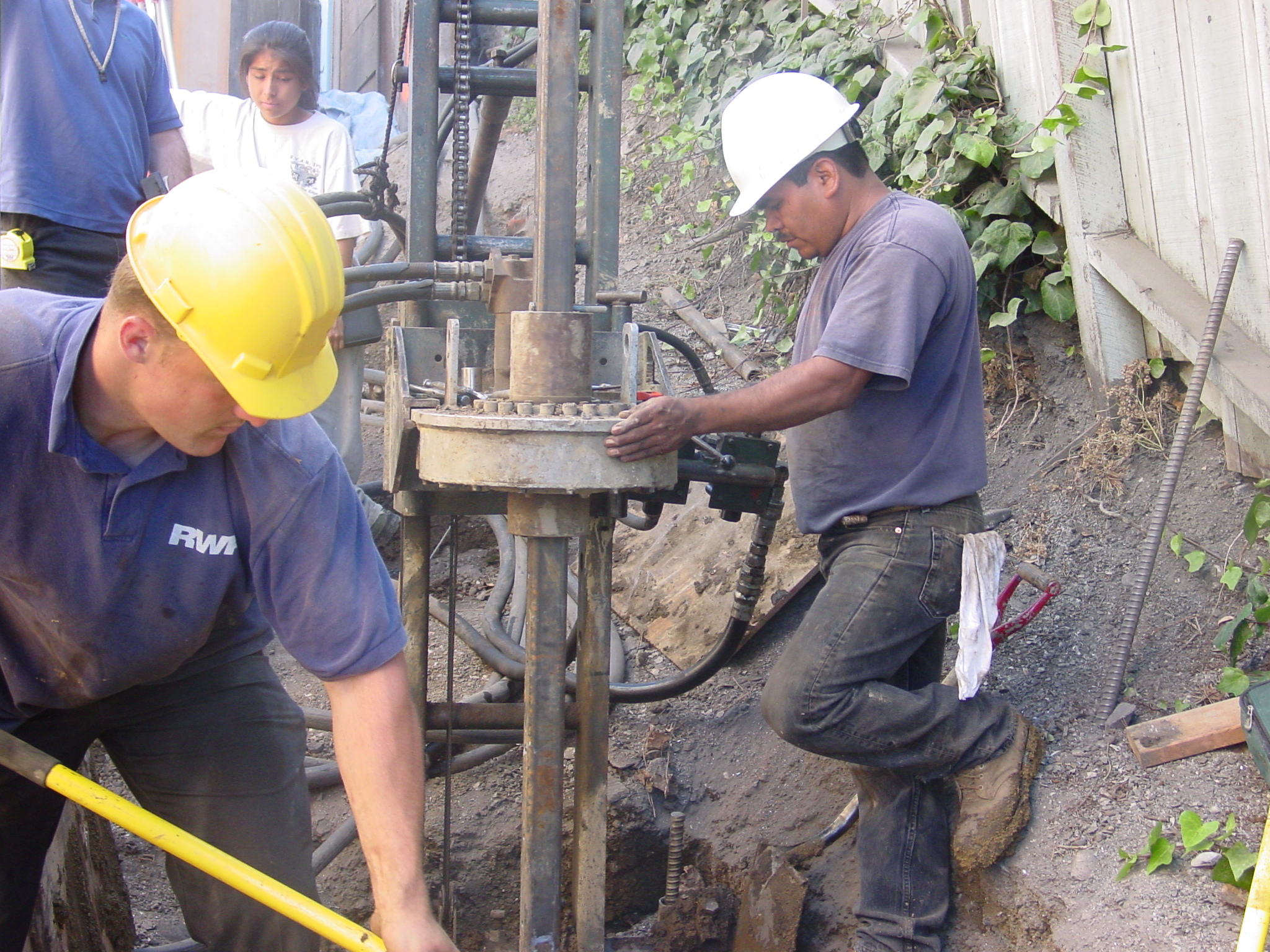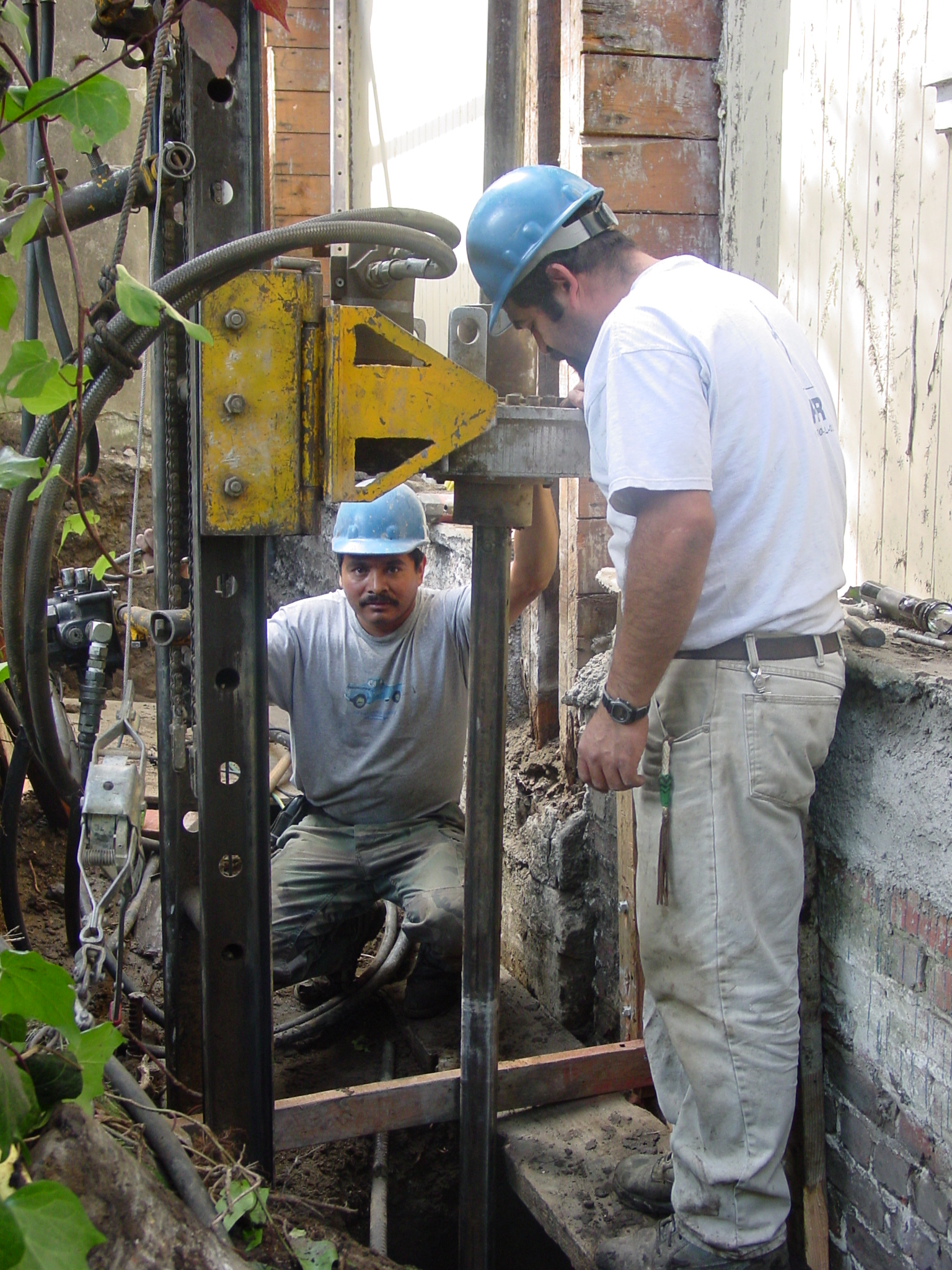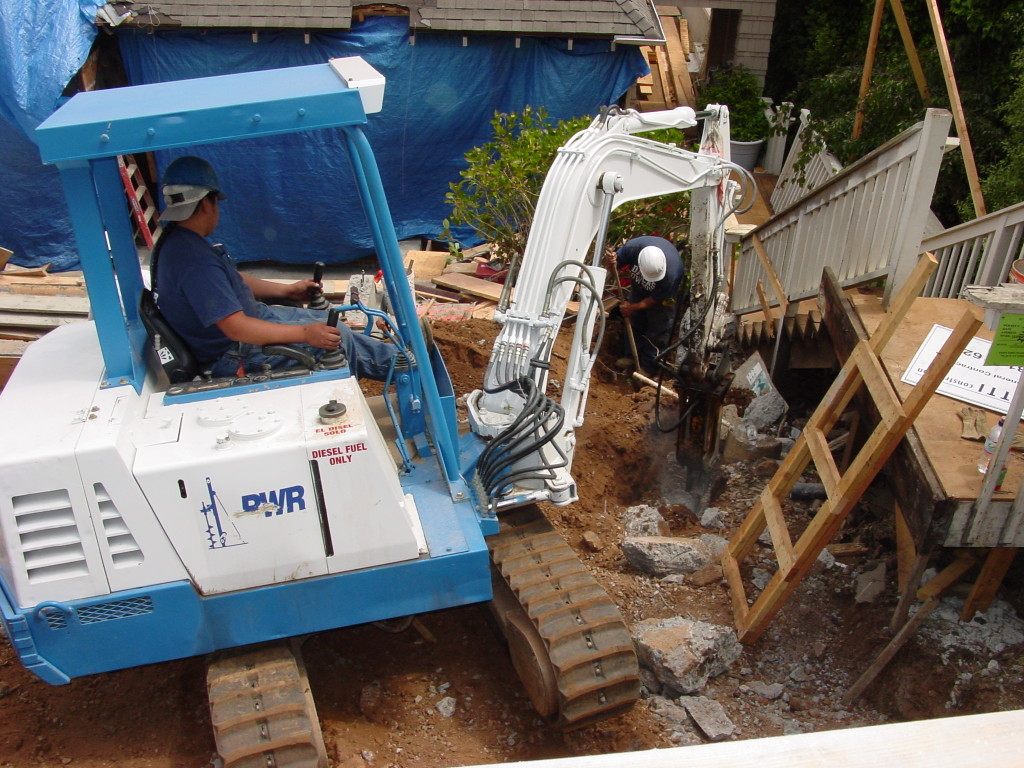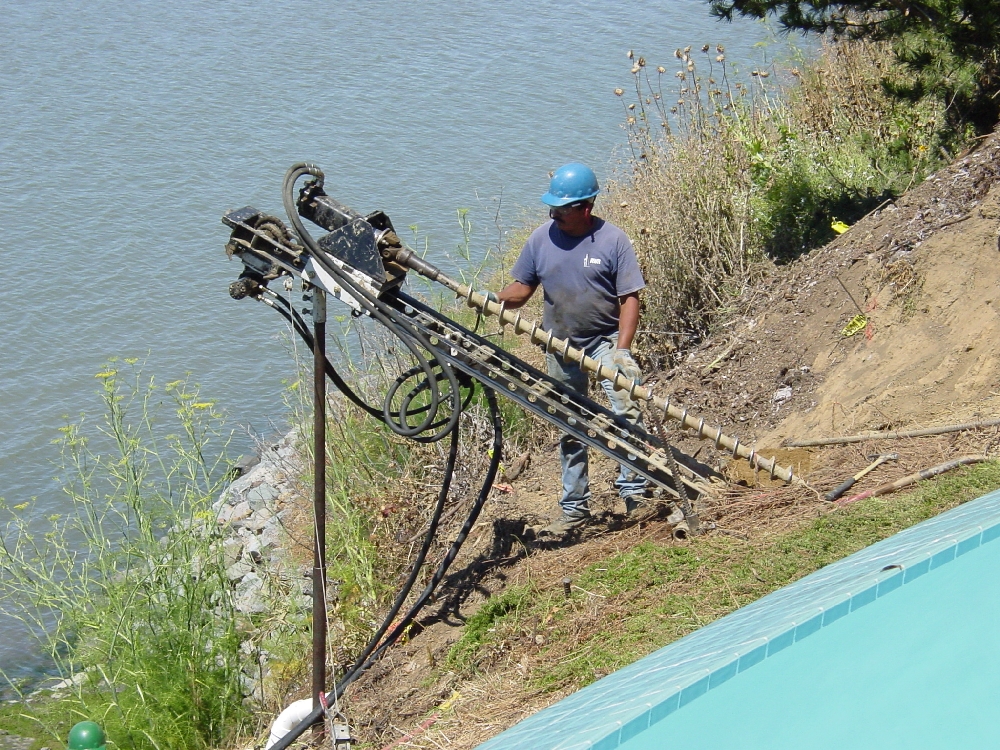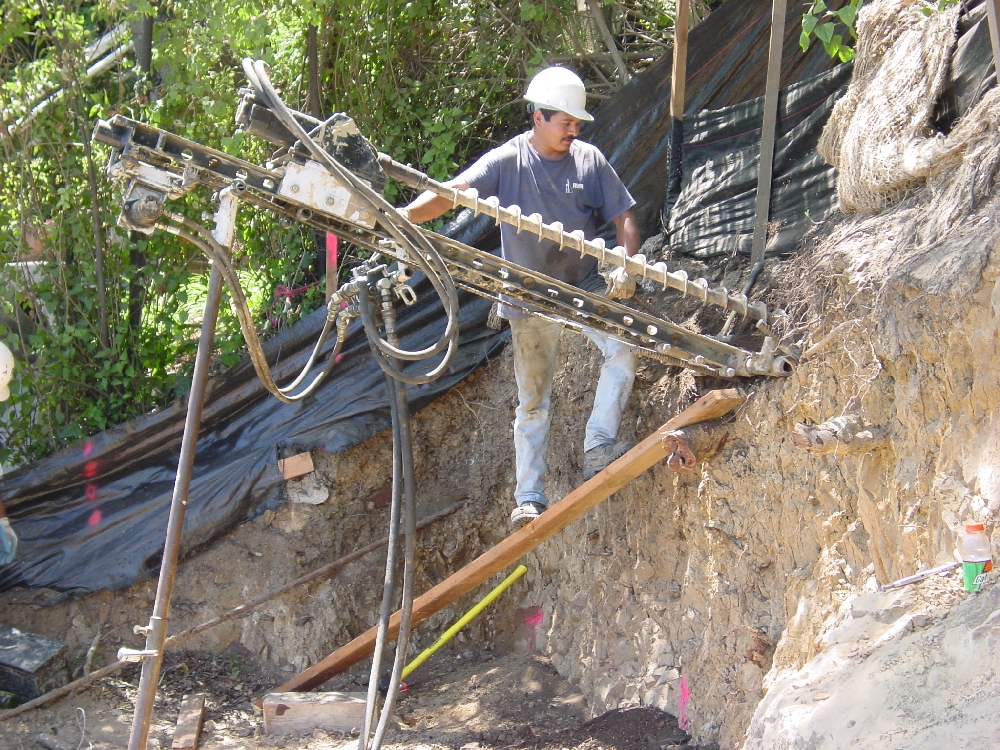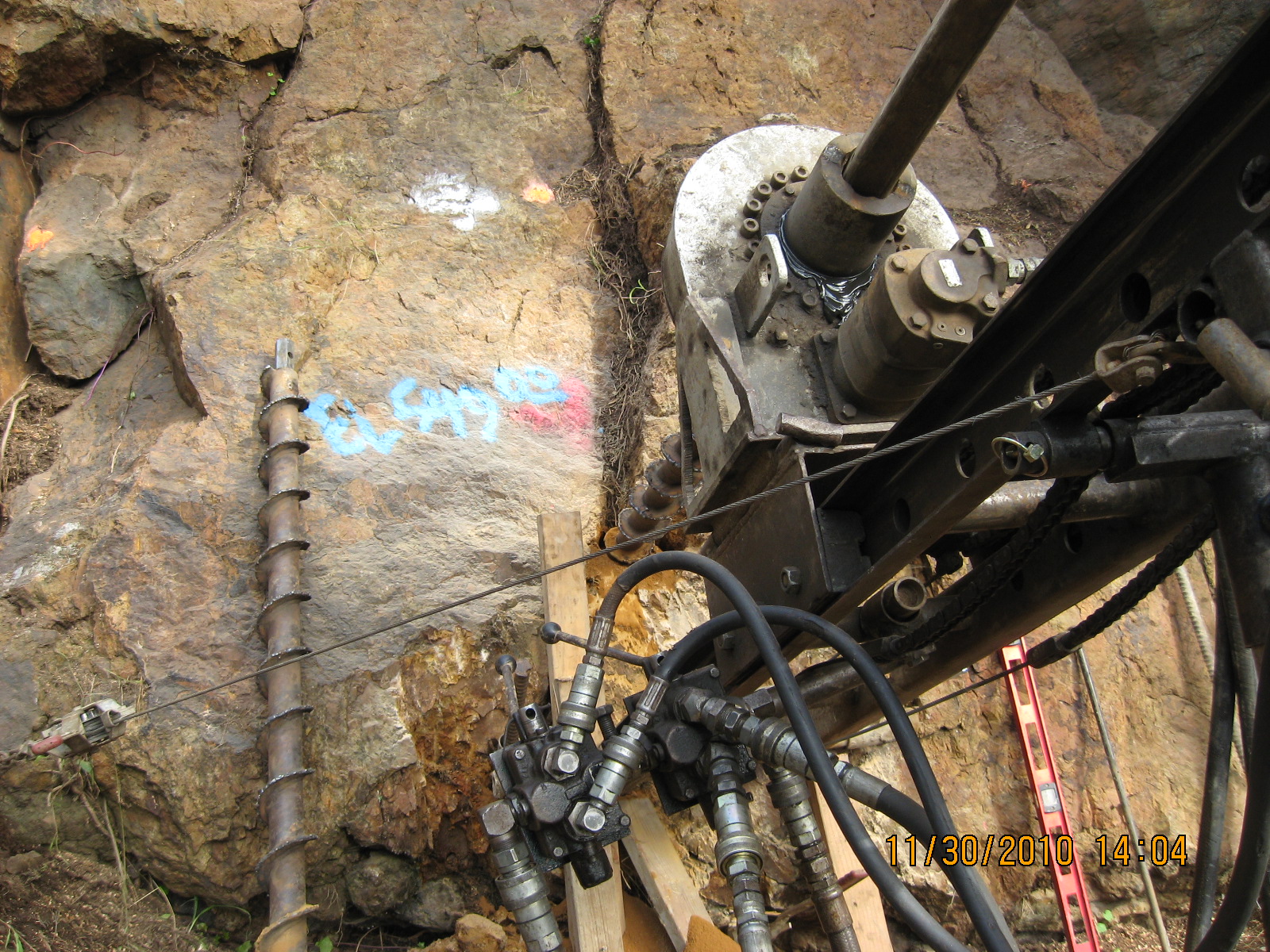We do:
- Piers
- Drilled cast-in-place
- Steel beam
- Helical Anchors
- Vertical + Lateral
- Foundation support
- Retaining wall support
- Tiebacks
- Retention wall systems
- Shoring, earth retention
- Tiebacks
- Rockbolts
- Soil nails
- Williams + Dywidag
- Holddowns, tiedowns
- Minipiles
- Drivenpiles
- Pushdown systems
- Self-drilling anchors
- Titan rods
RWR is an expert
We are known as one of the top construction firms in the Bay Area for installing all types of structural support piers and piles, helicals, tiebacks, lateral retention systems and holddowns.
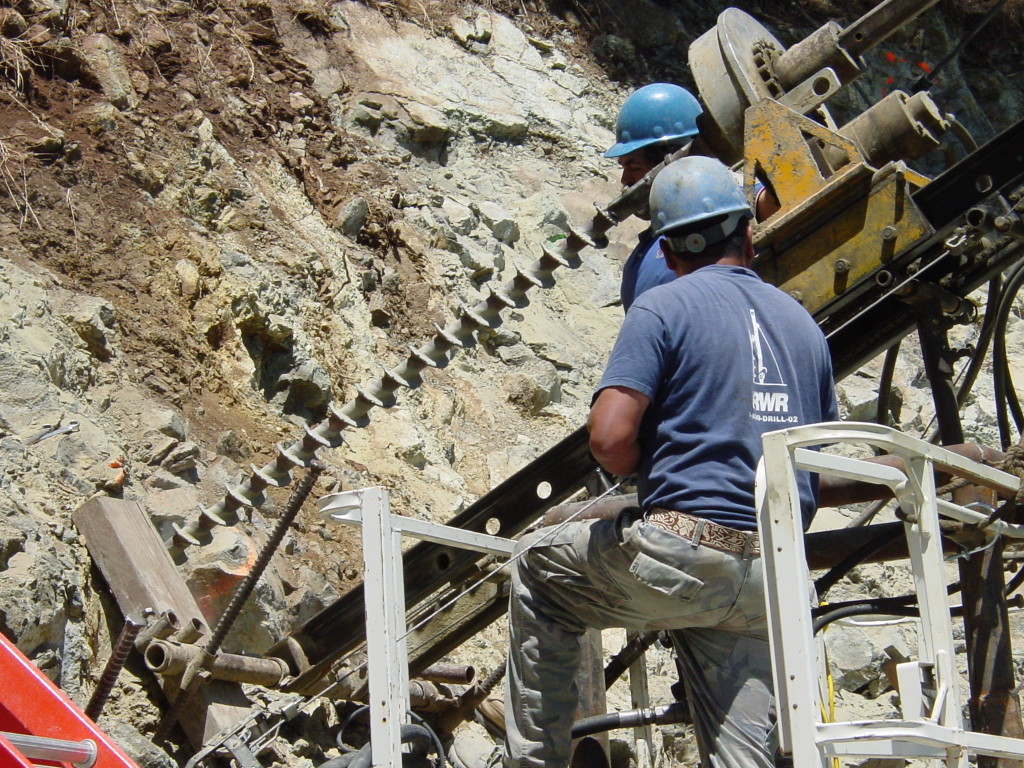
Drilling small diameter hole in rock
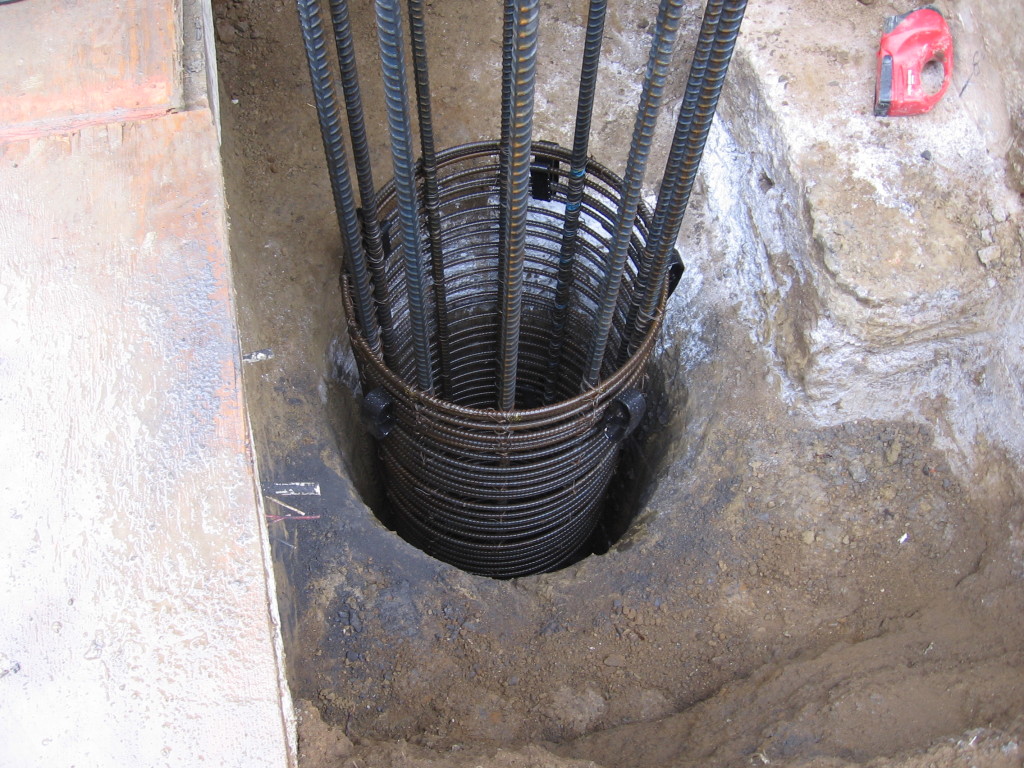
Pier
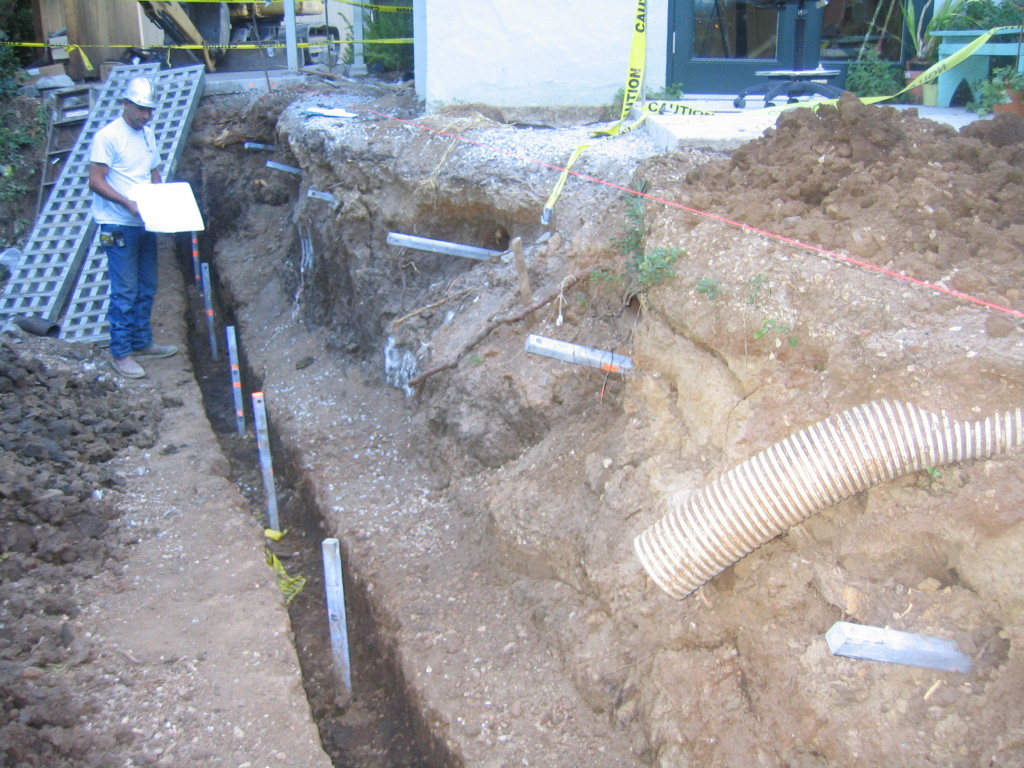
Helilcal Piers
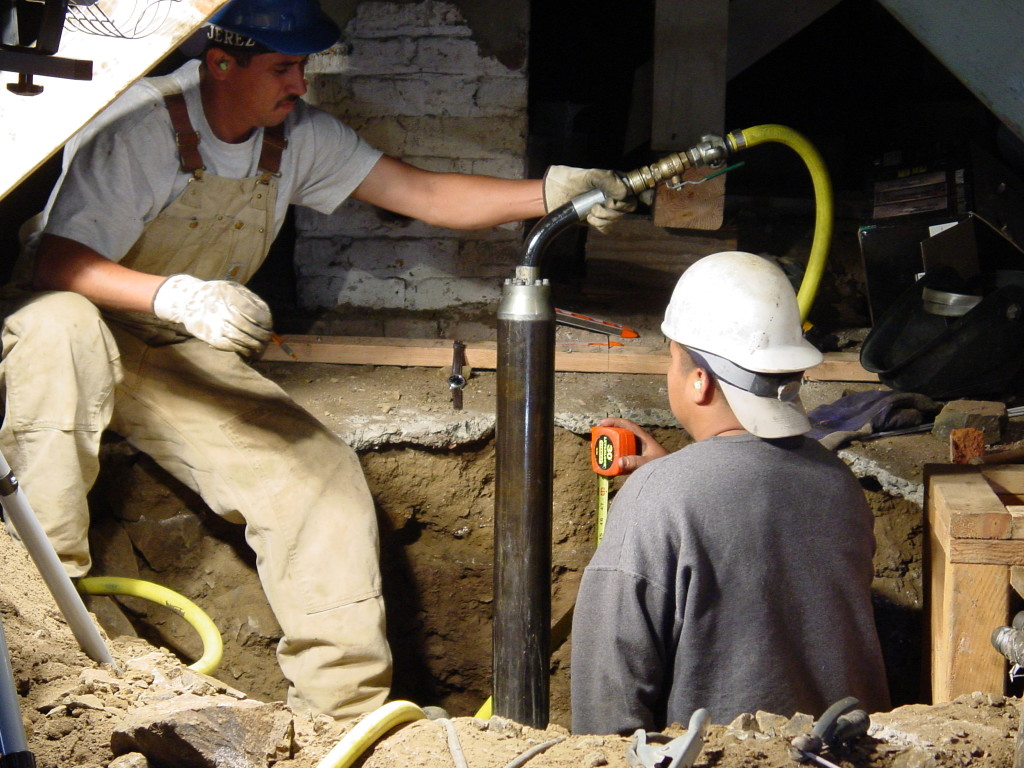
Minipile
Piers
A pier is a vertical and lateral structural support, which is embedded in the ground. It can be constructed of reinforced concrete, steel, or wood. In the Bay Area, seismic zone conditions and prevalent soil types dictate the use of piers for structural support of foundations or other structures such as retaining walls. Steel I-Beam piers embedded in concrete are also commonly used for retaining walls. It is important the pier be embedded into solid material (such as bedrock). Under certain circumstances other piers besides reinforced concrete may be available for use in the project, which can be more cost-effective. These would include helical piers or steel pipe pile piers: RWR has expertise in installing all types of piers.
Helical piers/anchors
Helical piers/anchors are steel shafts with attached screw style plates. Helical piers are excellent for driving a pier through soft material to firmer material such as bedrock. Typically helical piers are installed by screwing the lead section into the ground while attaching the shafts to obtain the necessary length. Helical piers can be used both vertically and horizontally.
Pipe pile piers (impact driven or push installed)
Pipe piers are 4” diameter hollow steel pipes that are either driven into the ground with a pneumatic driver or pushed using a hydraulic ram that uses the foundation as the reaction. The piles are driven to a predetermined refusal rate or pushed until the foundation starts to be raised.
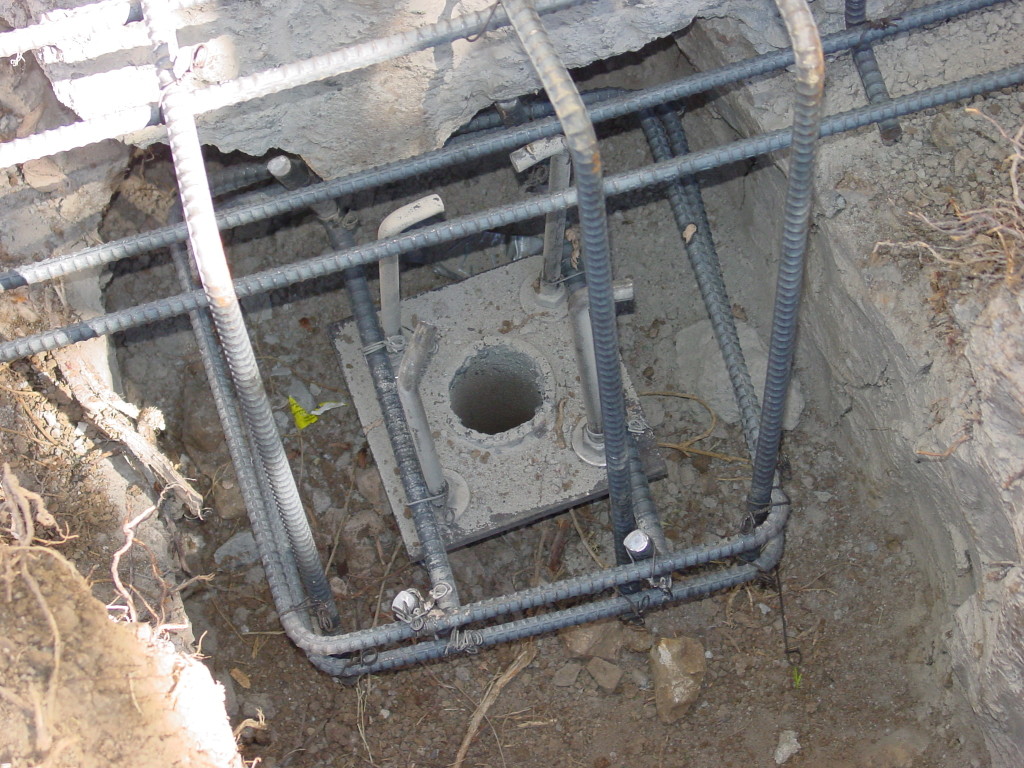
Foundation underpinning with minipile
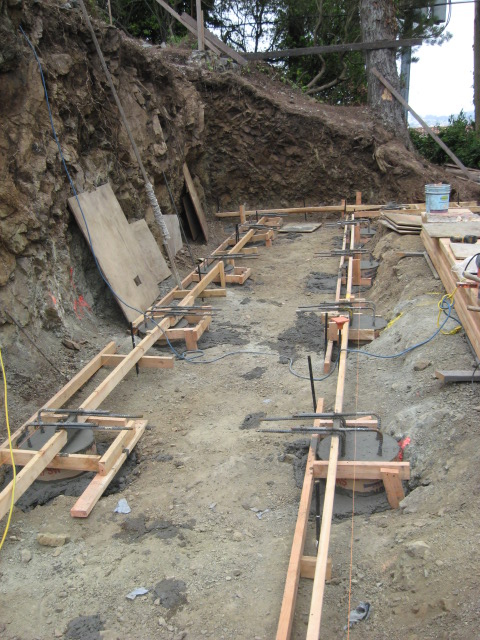
Freshly poured piers with transfer bars sticking out
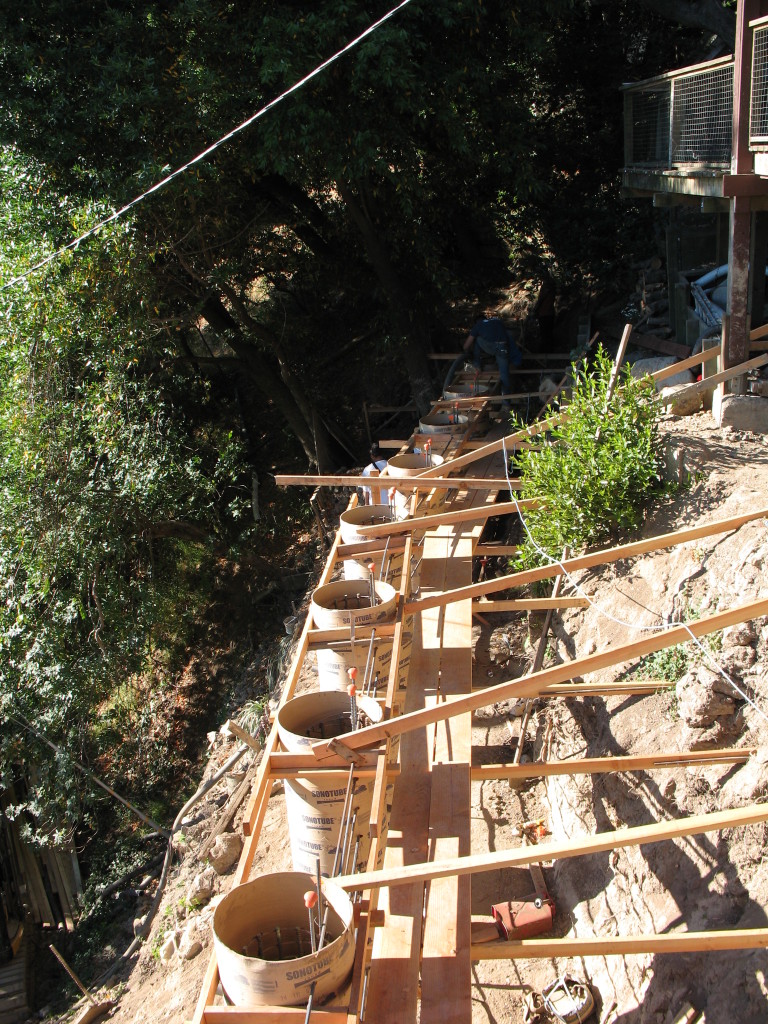
Sonotube-formed piers for retaining wall
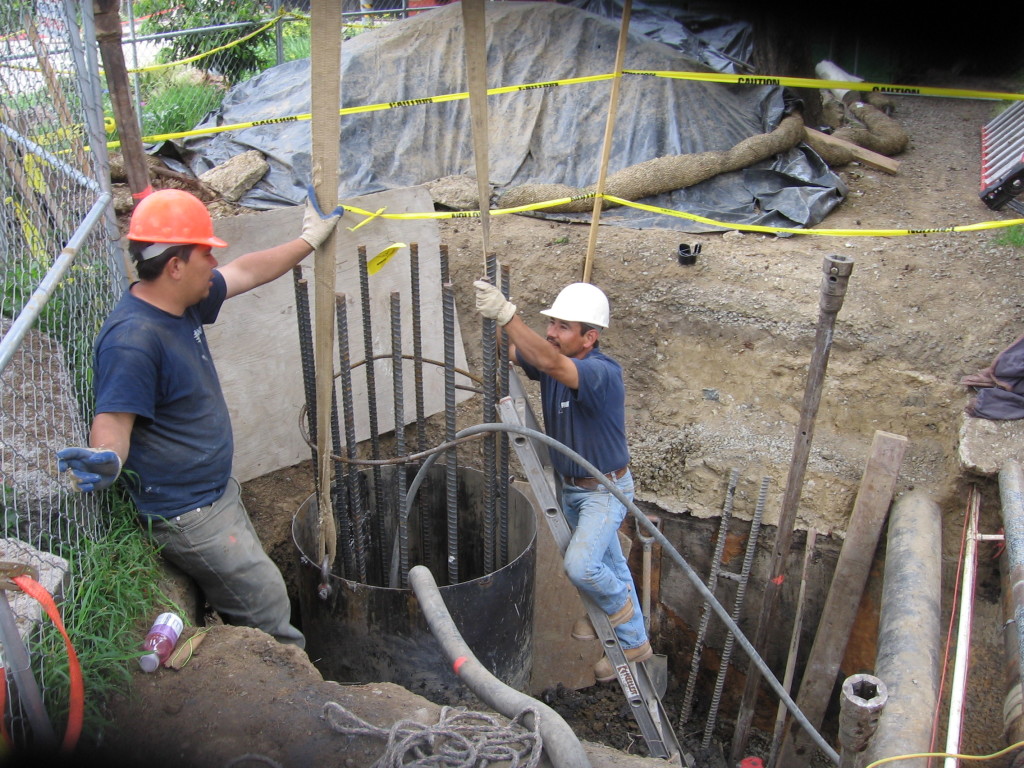
Pouring 36 inch diameter reinforced pier
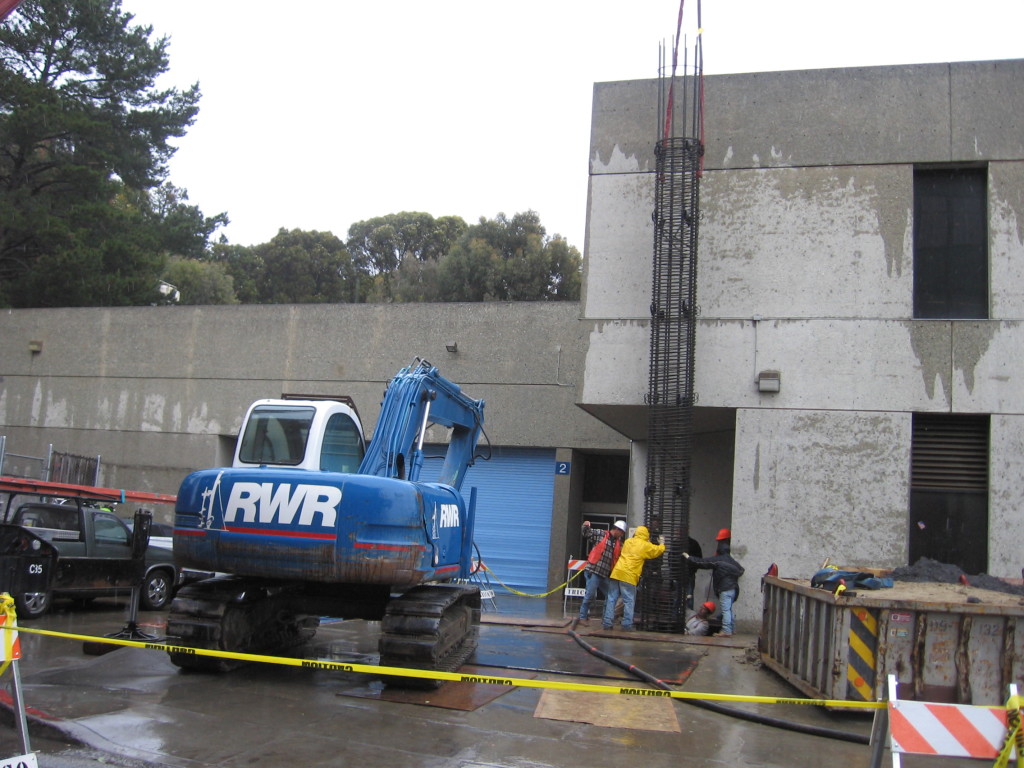
Setting cage in 50 foot deep pier shaft with crane

Stabilizing hillside with deep piers, ready to pour
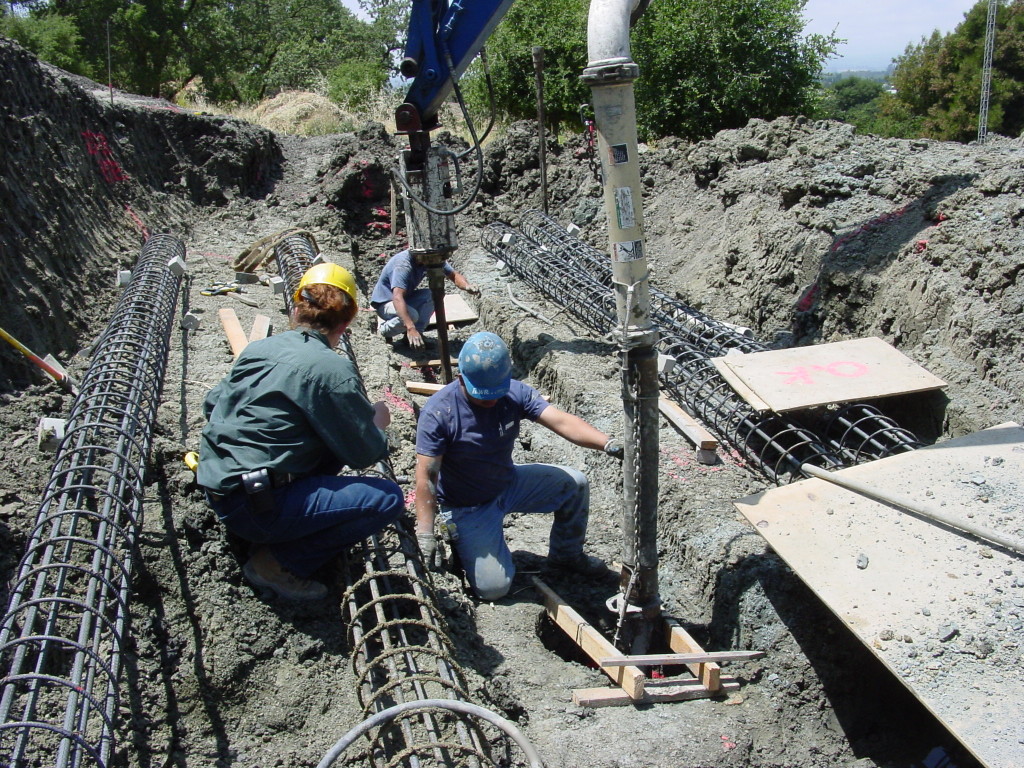
Pouring piers for landside repair, with reinforcing cages shown on ground
Tiebacks
Used to prevent lateral (sideways) movement for foundations, retaining walls and shoring systems, tiebacks usually consist of a steel rod or cables grouted into a horizontally drilled shaft. A bolted steel plate is placed on the end of the rod sticking out of the ground, that prevents the structure from tipping or moving sideways. Helical anchors can also be used in some circumstances and can be more economical.
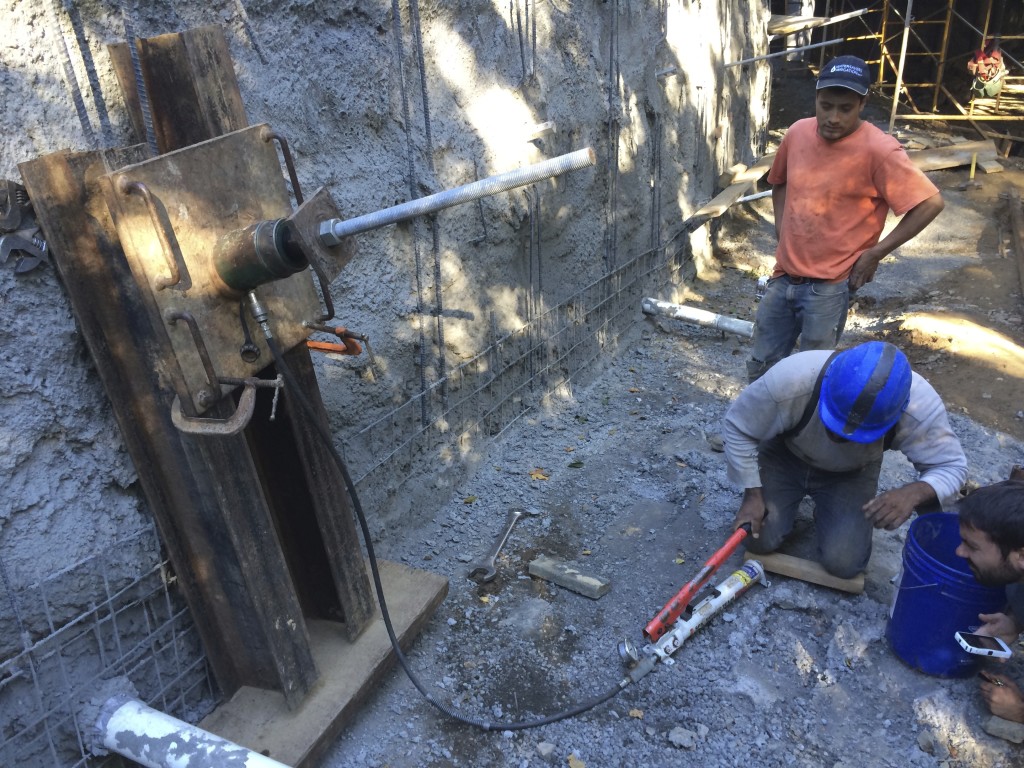
Pull testing helical tieback for pullout strength. You have to test the anchor to verify it will hold beyond working specifications. If the anchor moves, then it must be driven deeper into the ground.

Pull testing helical tieback for pullout strength. You have to test the anchor to verify it will hold beyond working specifications. If the anchor moves, then it must be driven deeper into the ground.

Galvanized helical material waiting to be installed on jobsite
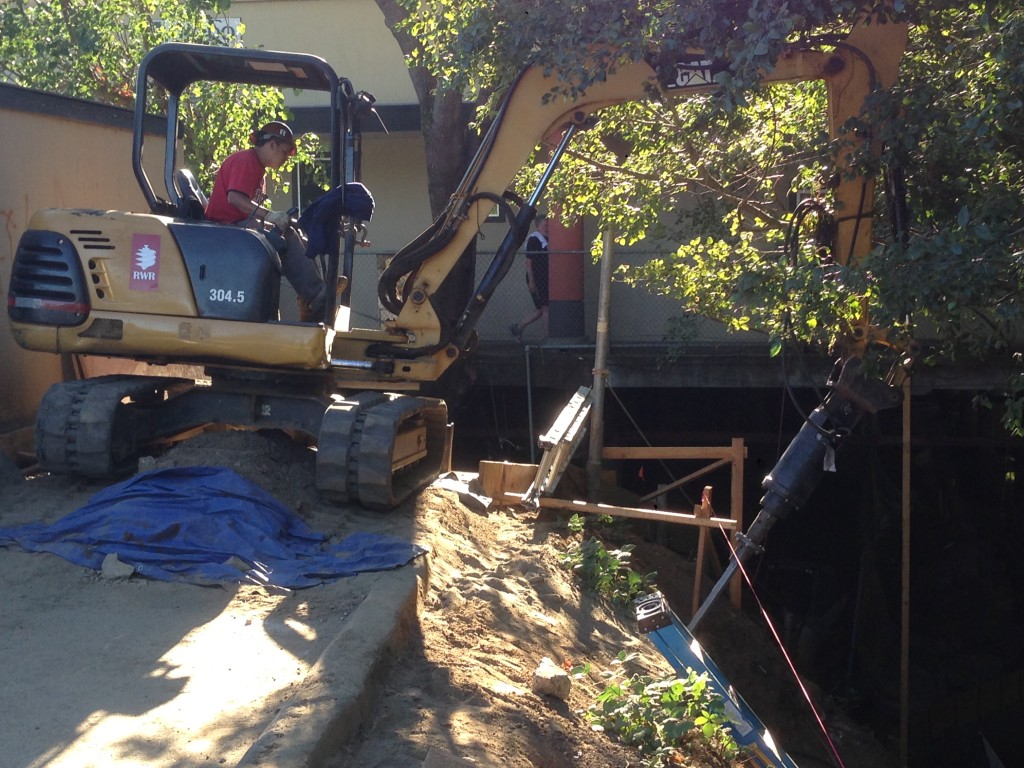
Installing helical anchor on creek bank
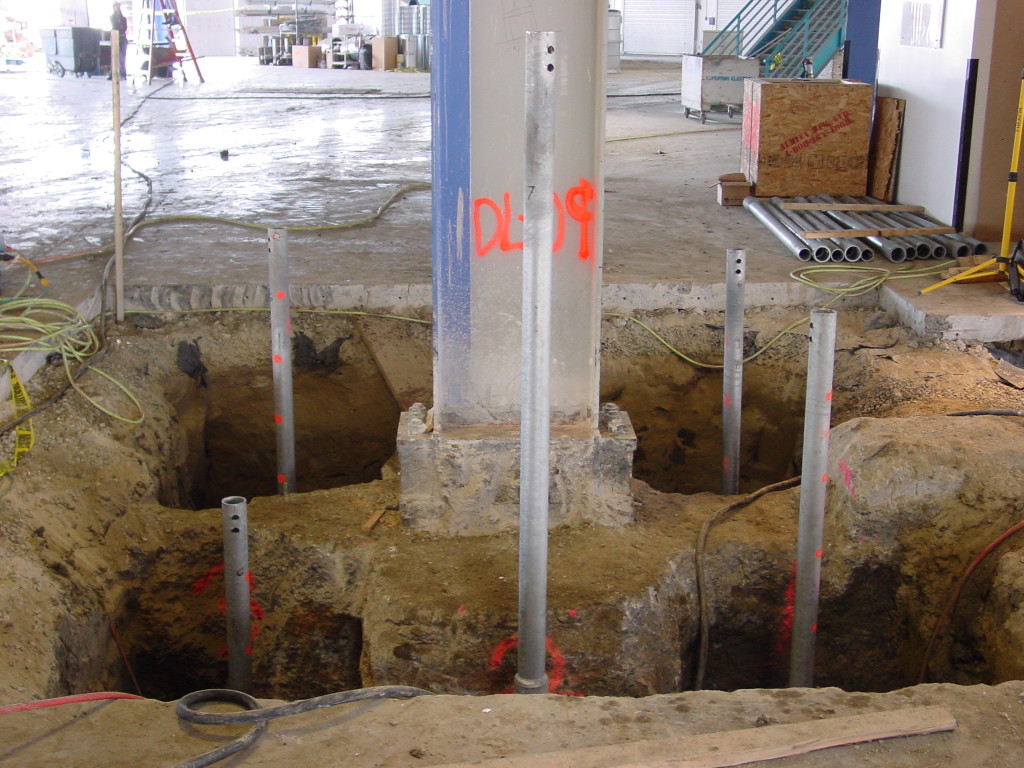
Grouted helical tie-down installation around existing column
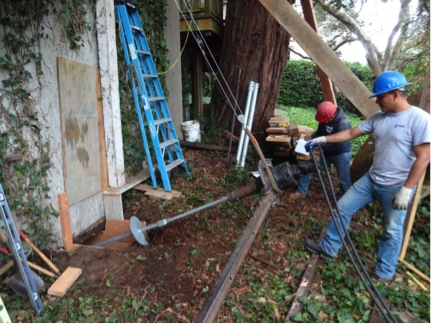
Helical anchor installation to stabilize existing foundation
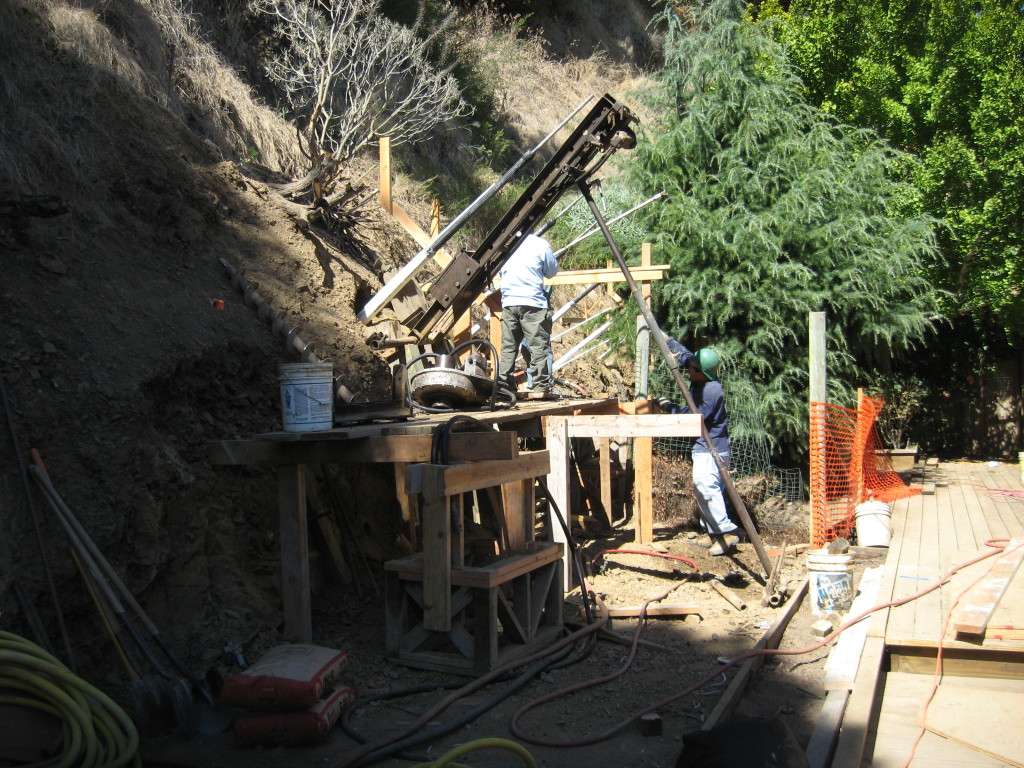
Drilling into hillside for tieback installation
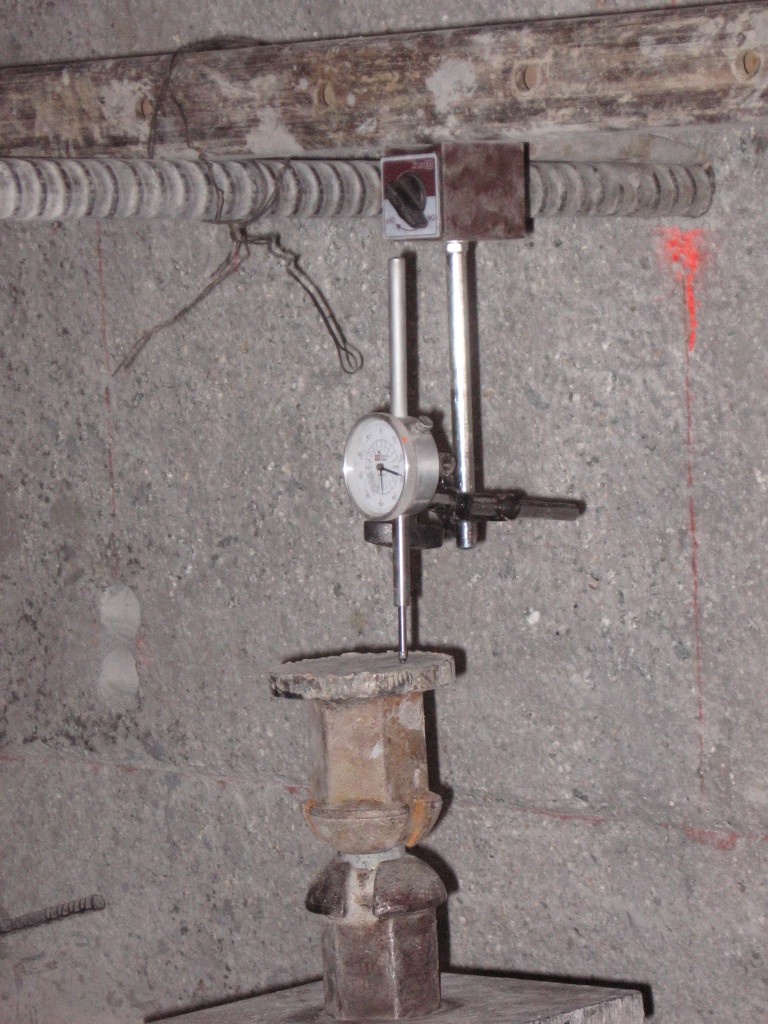
Tiedown load testing
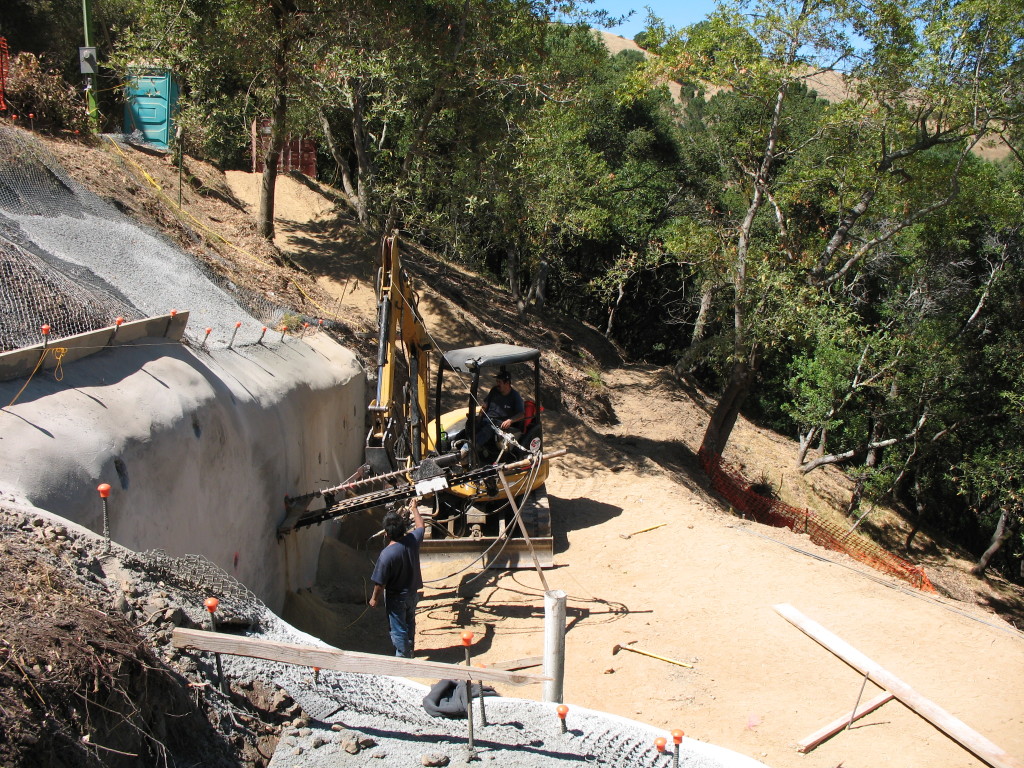
Tieback installation in shotcrete wall
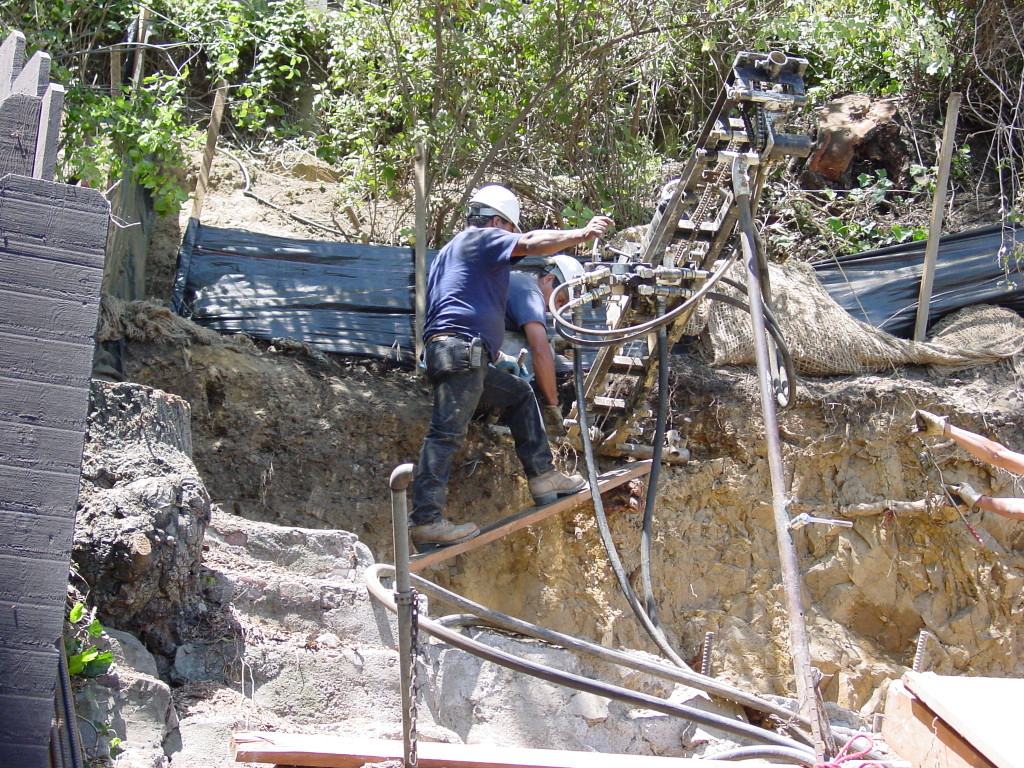
Tieback drilling, difficult access on hillside
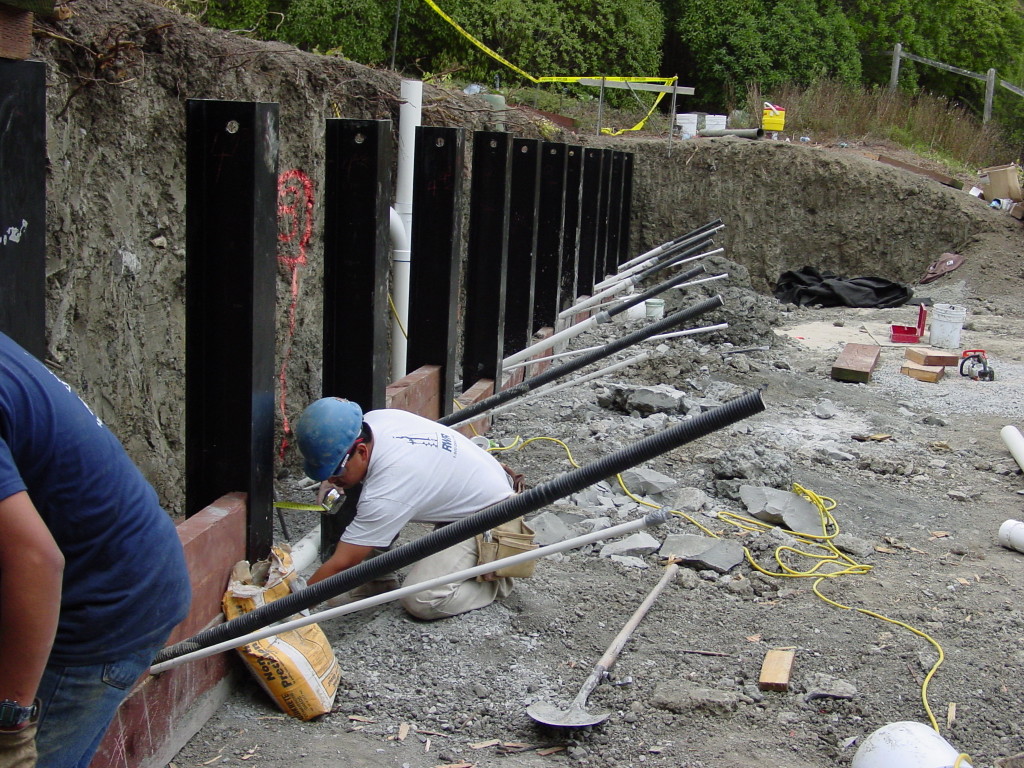
Series of installed tiebacks for soldier beam wall
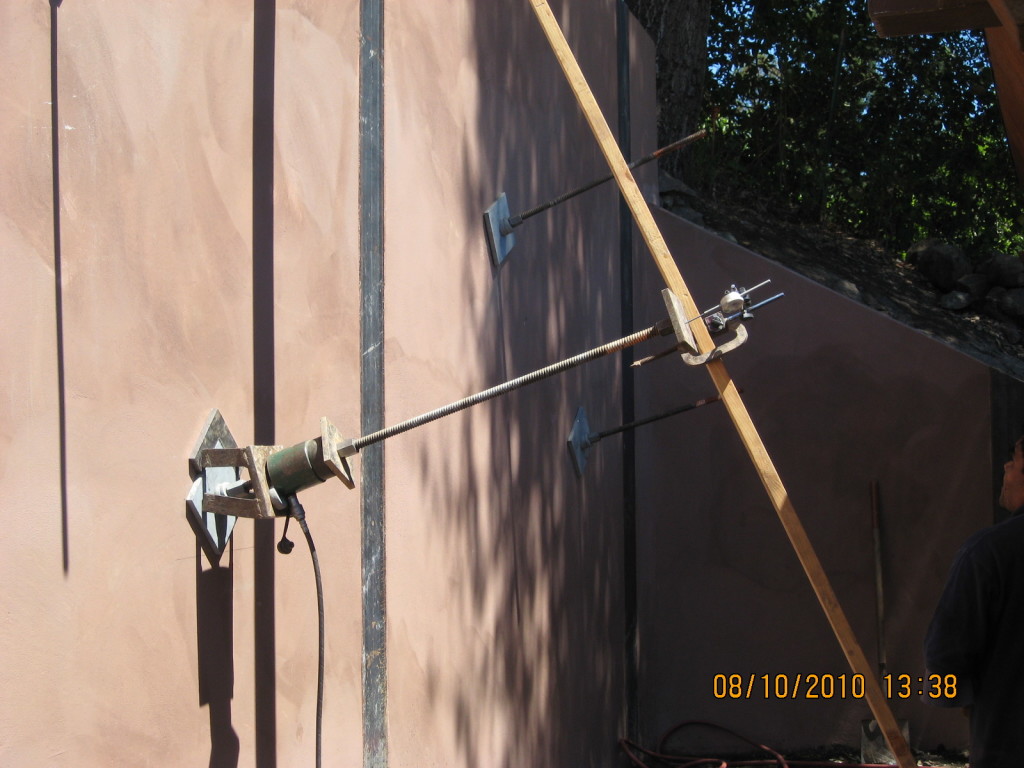
Pull test on tieback

Installed tiebacks in hillside
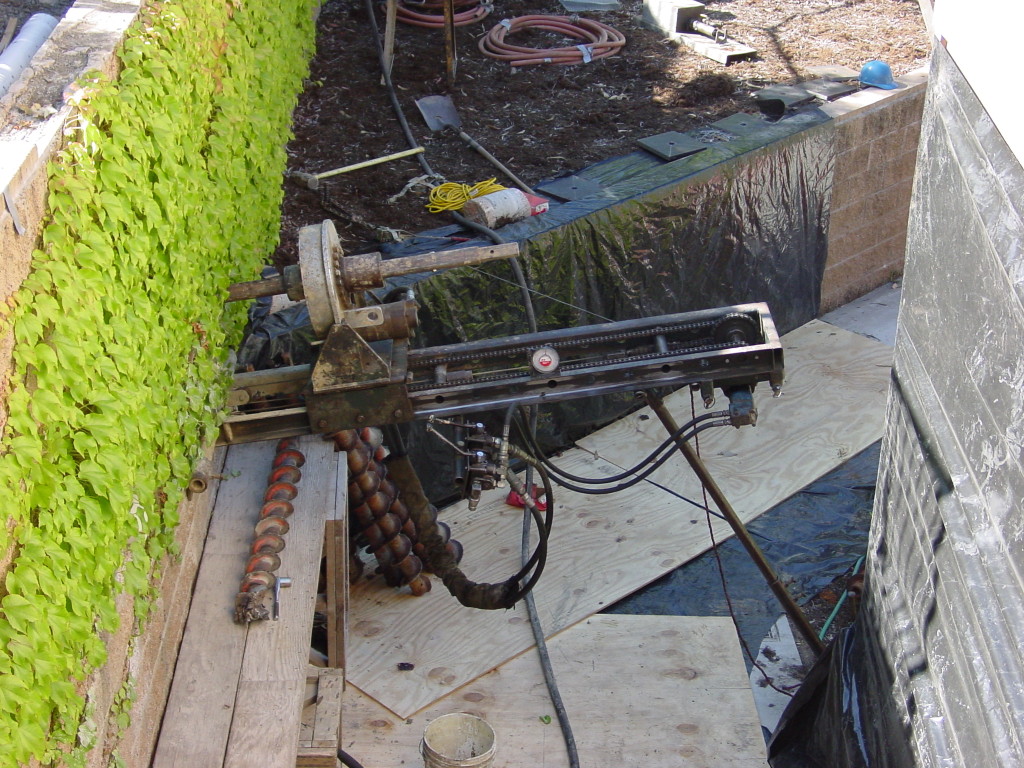
Drilling tieback for additional support for existing retaining wall
